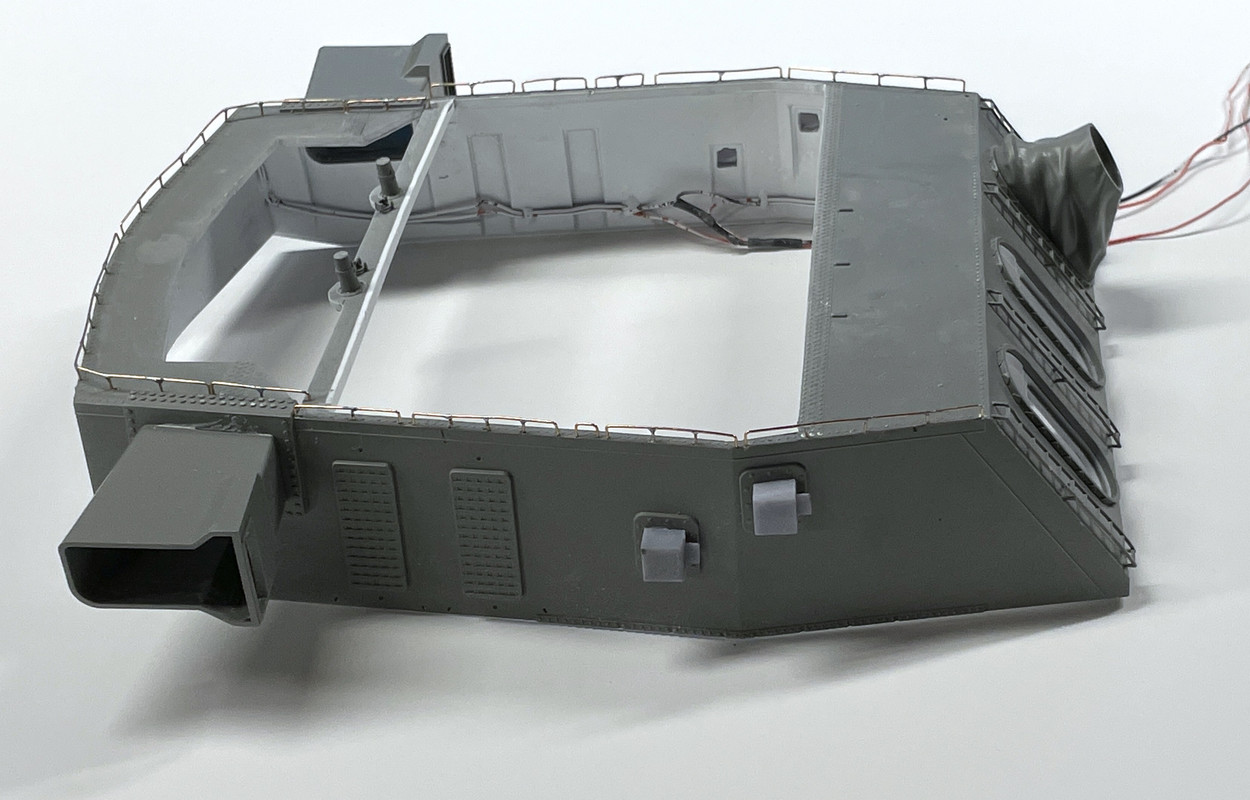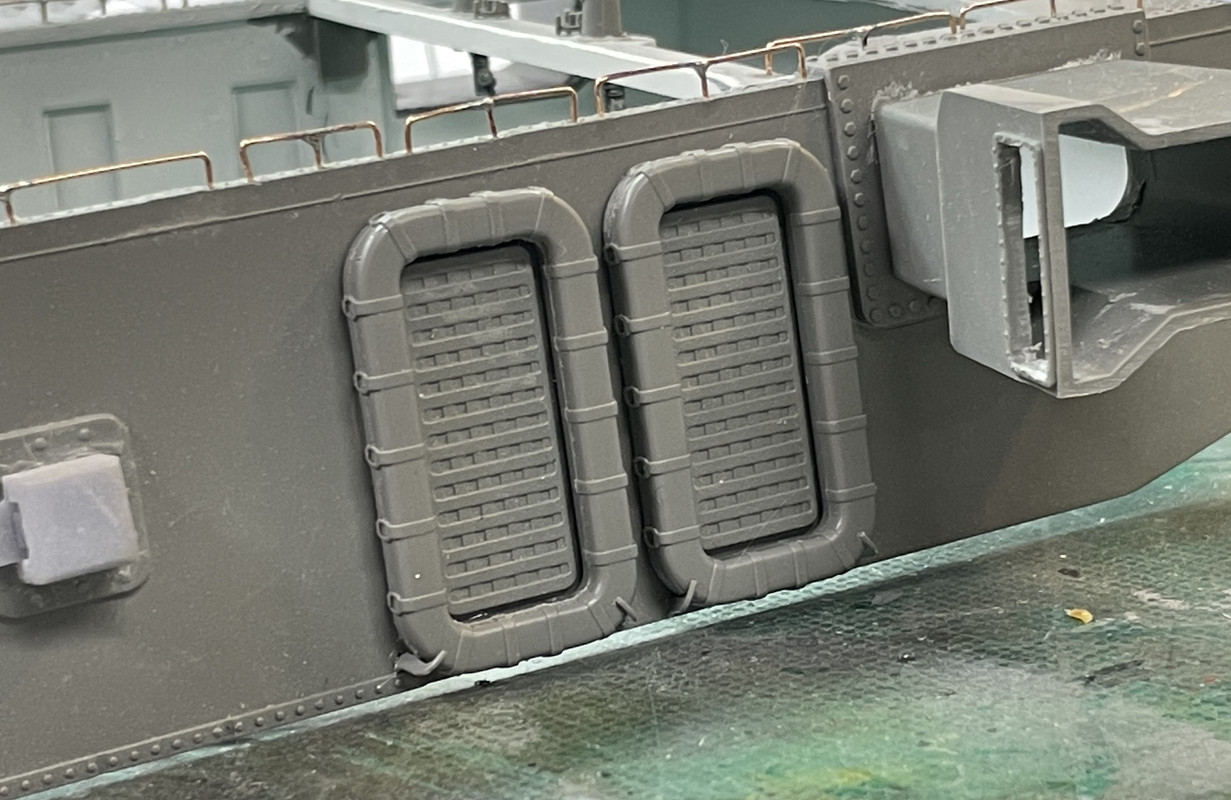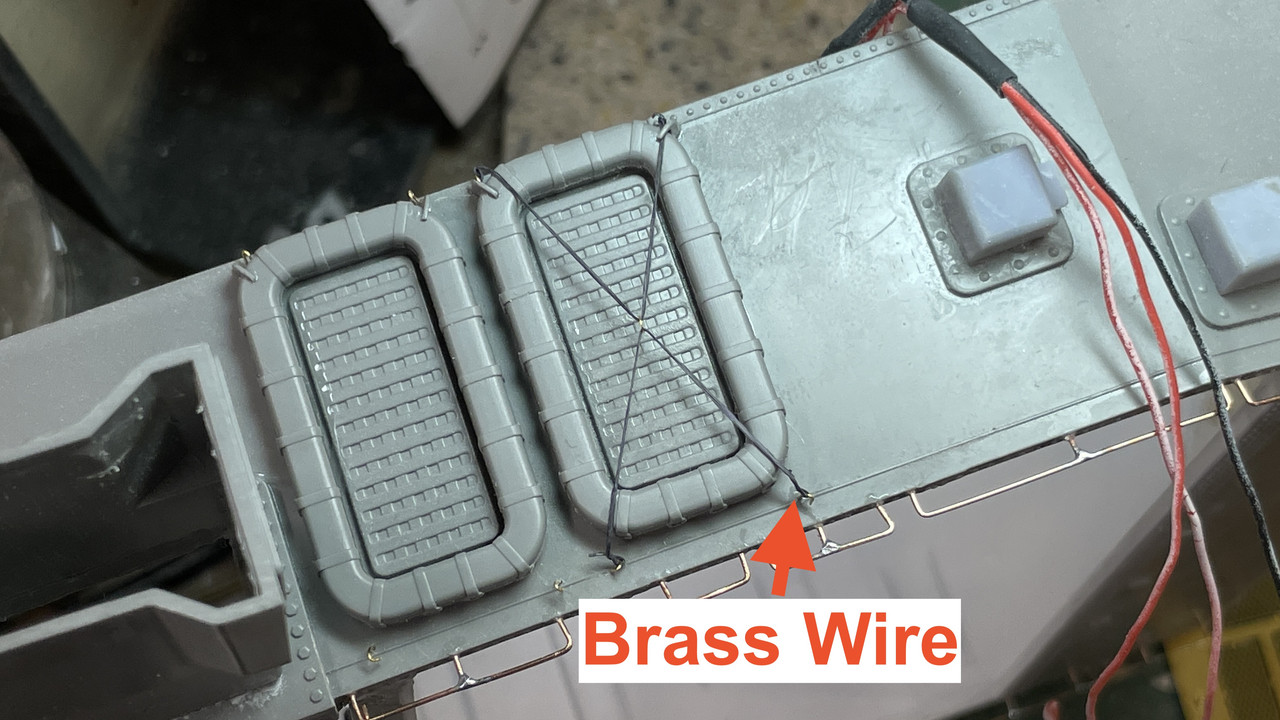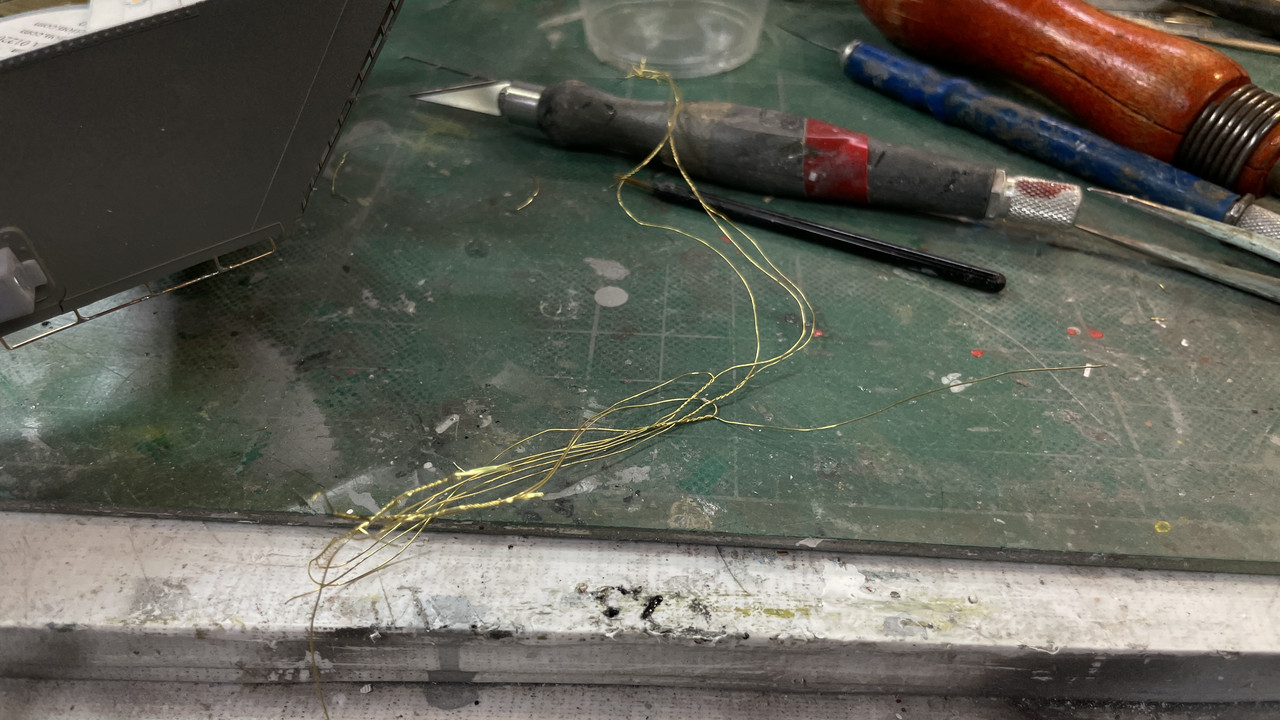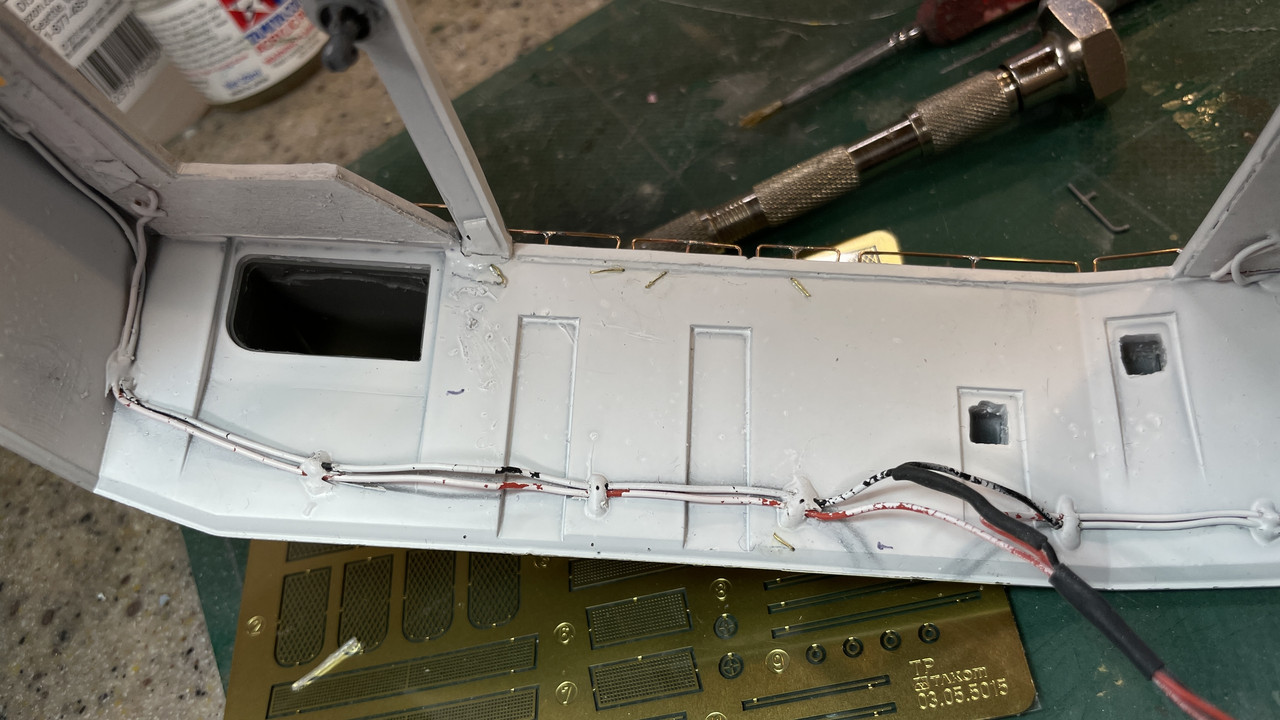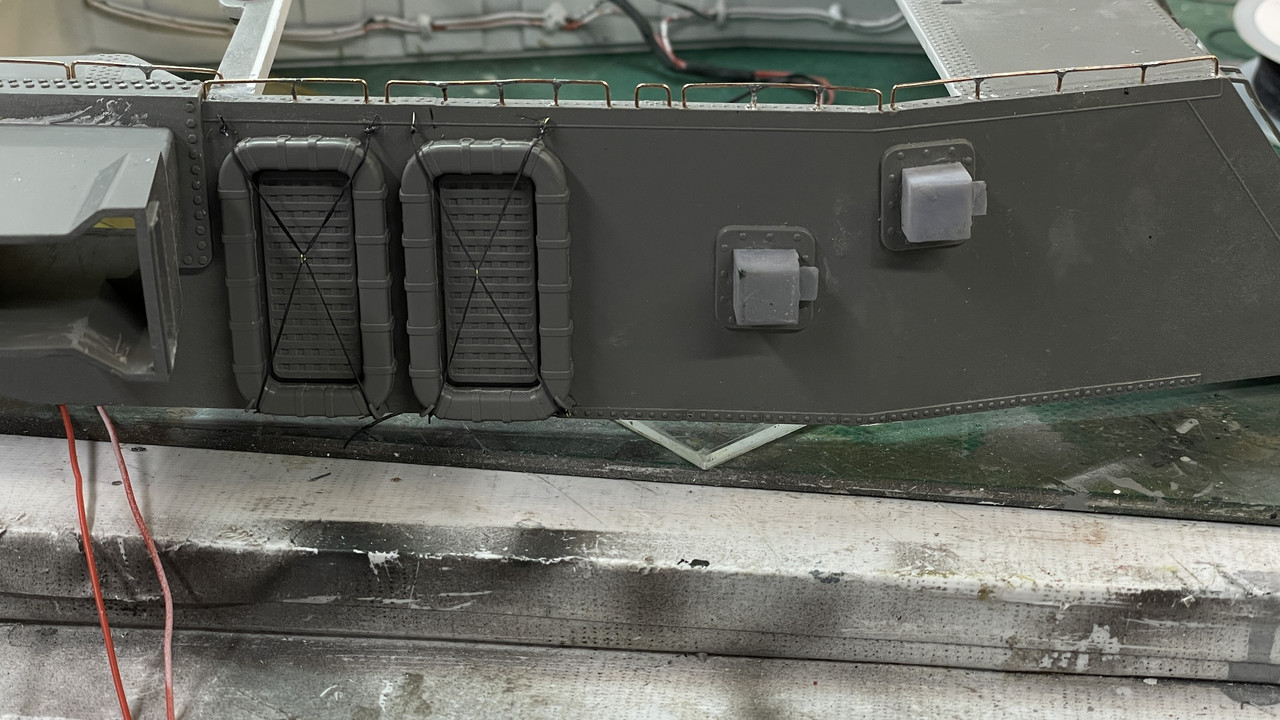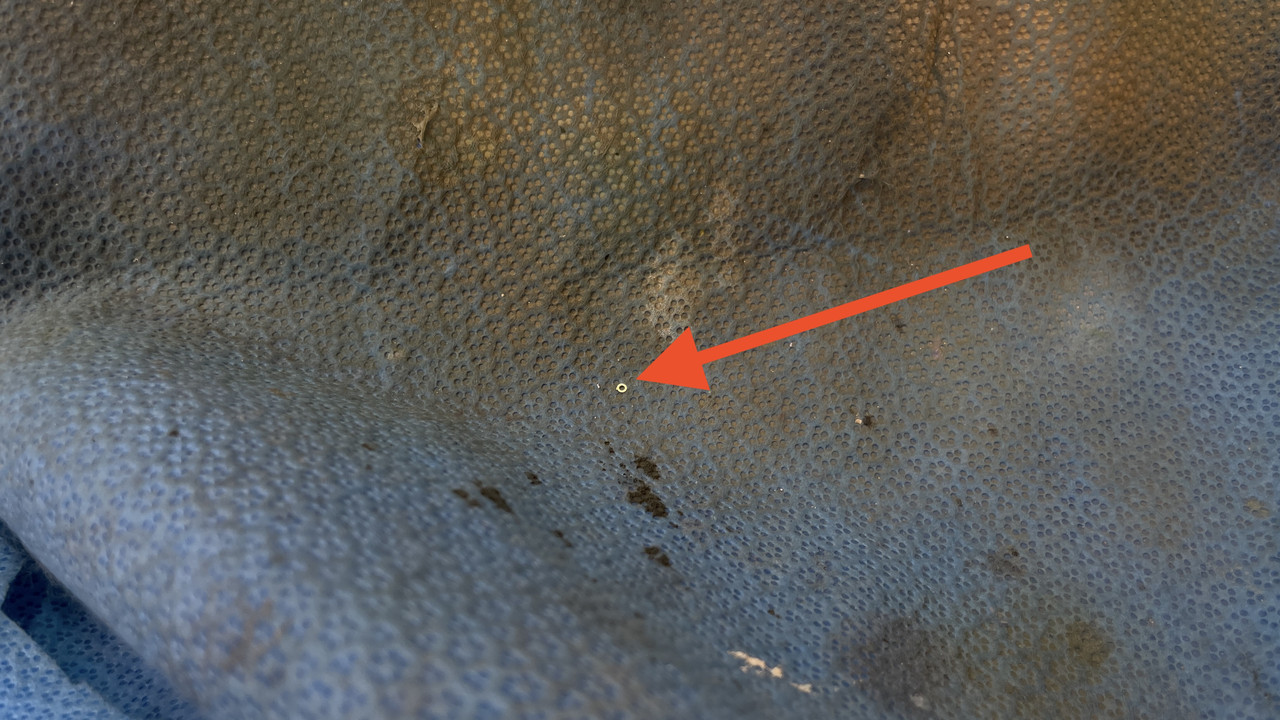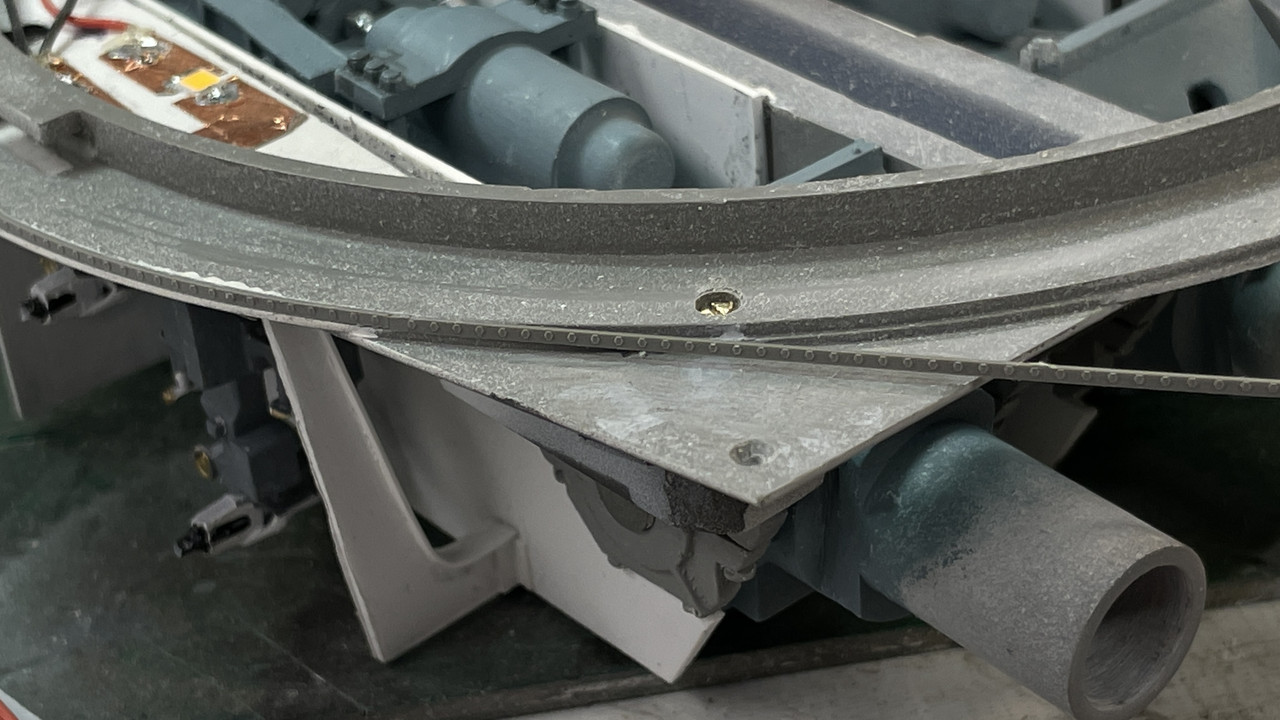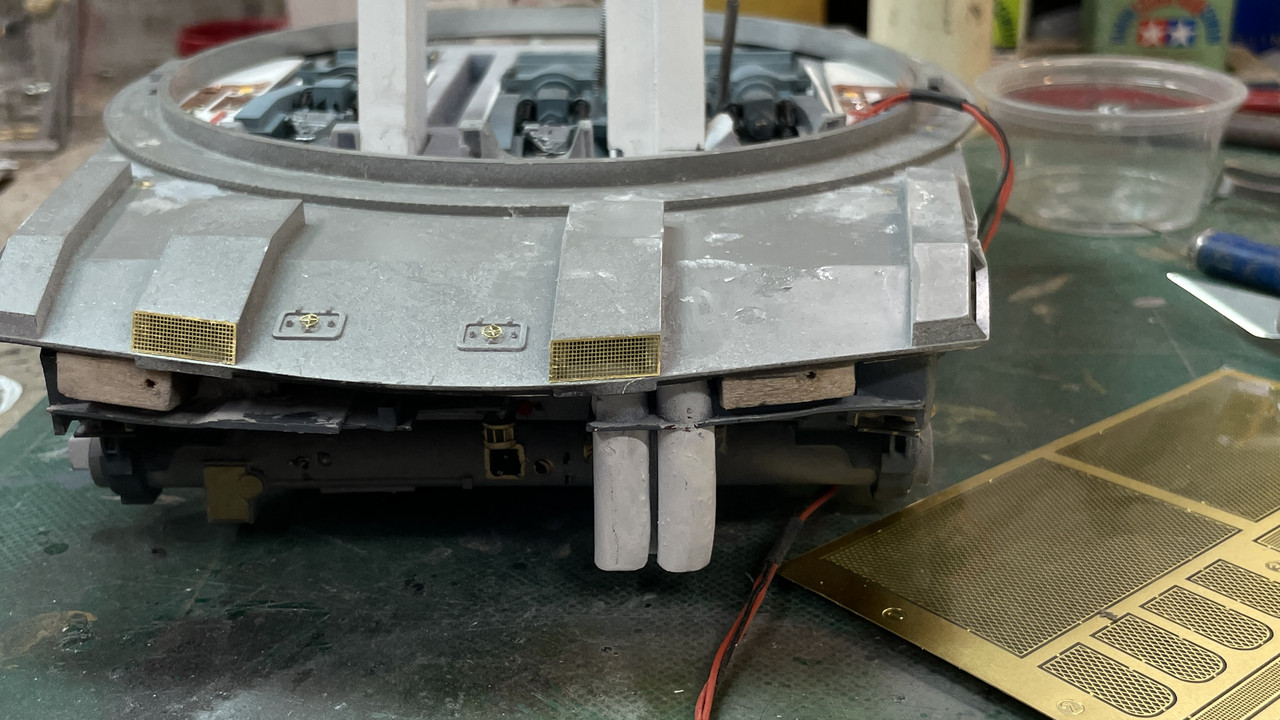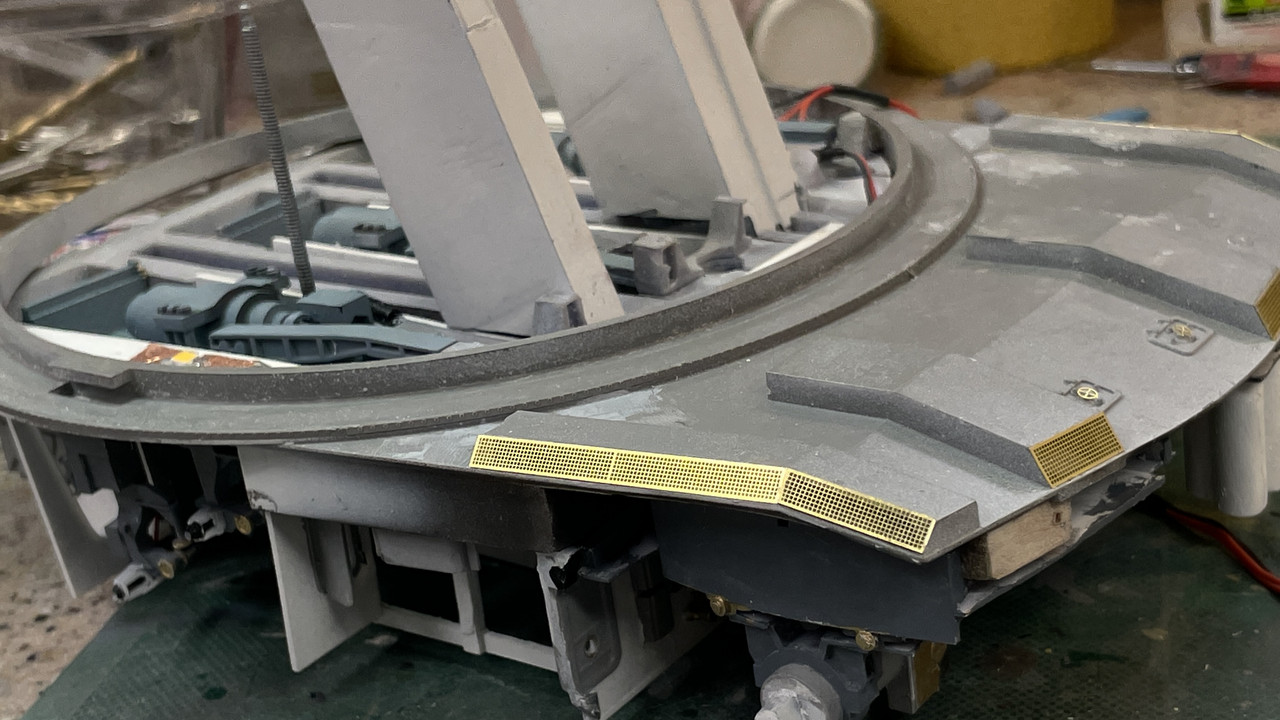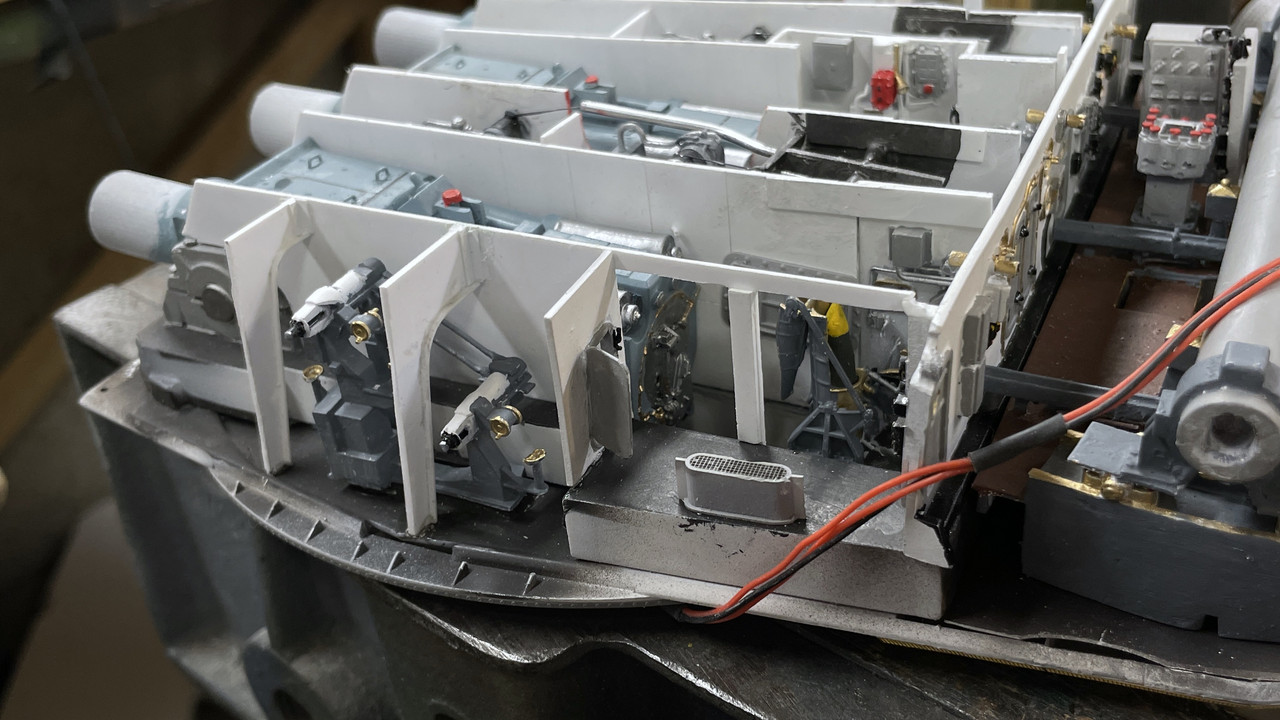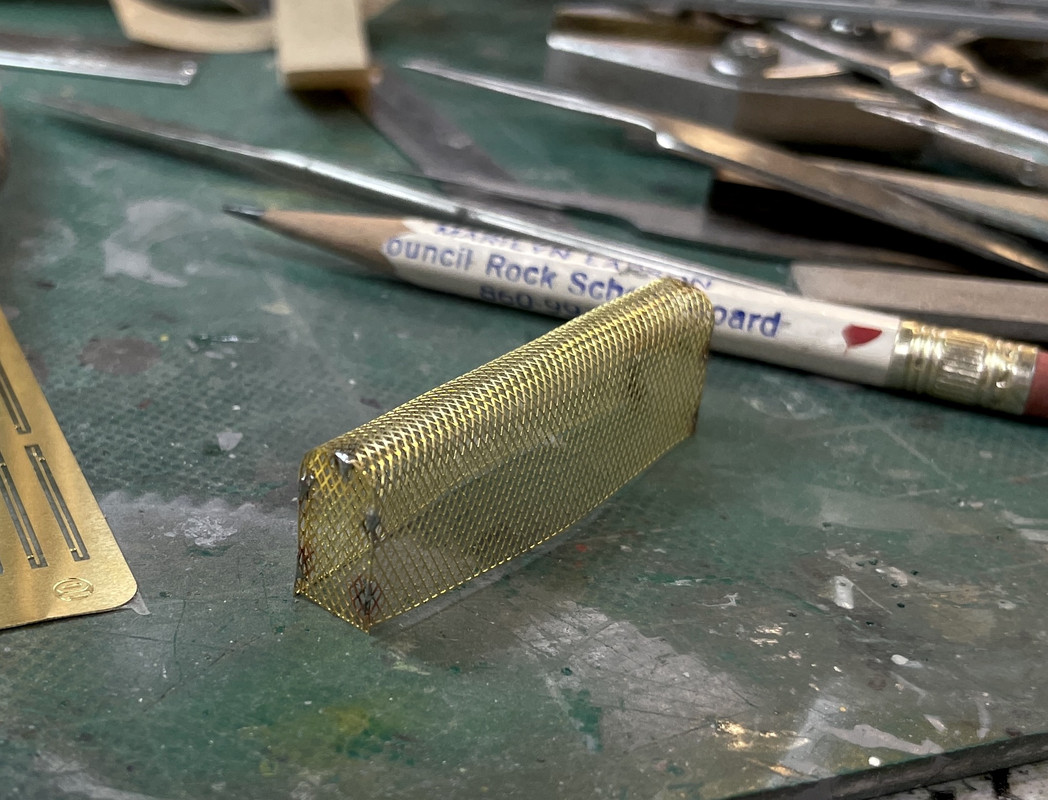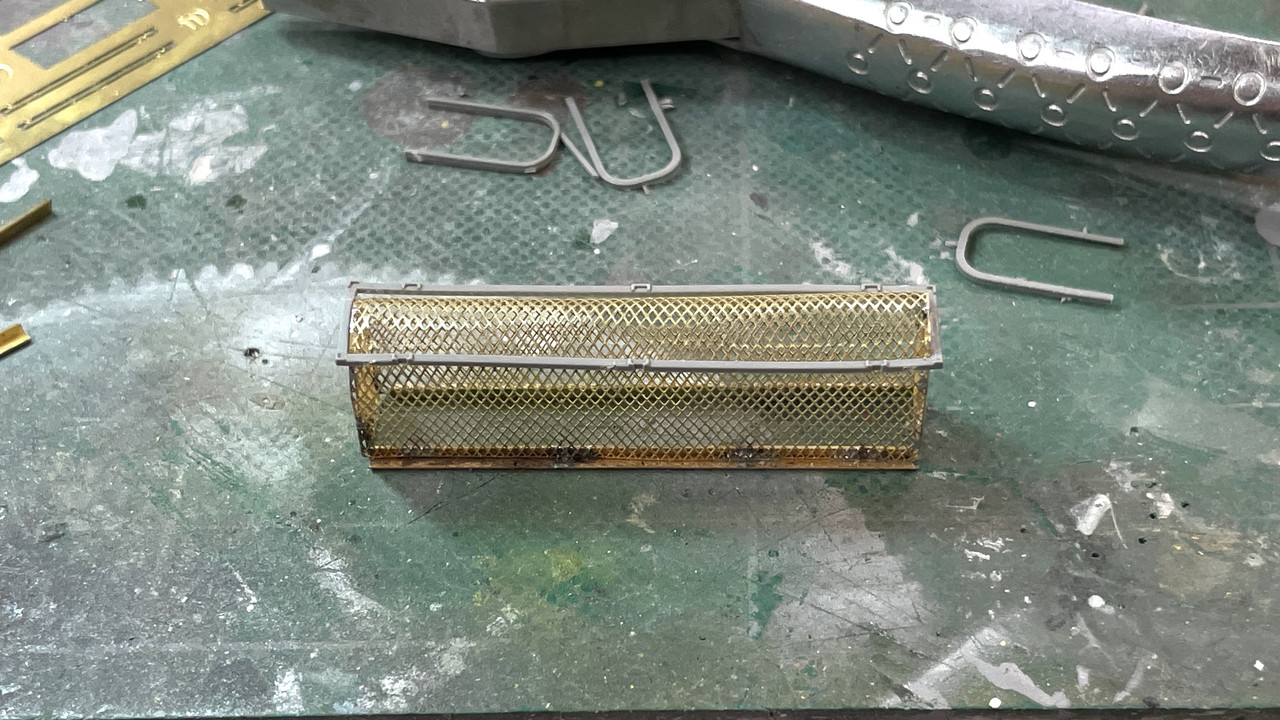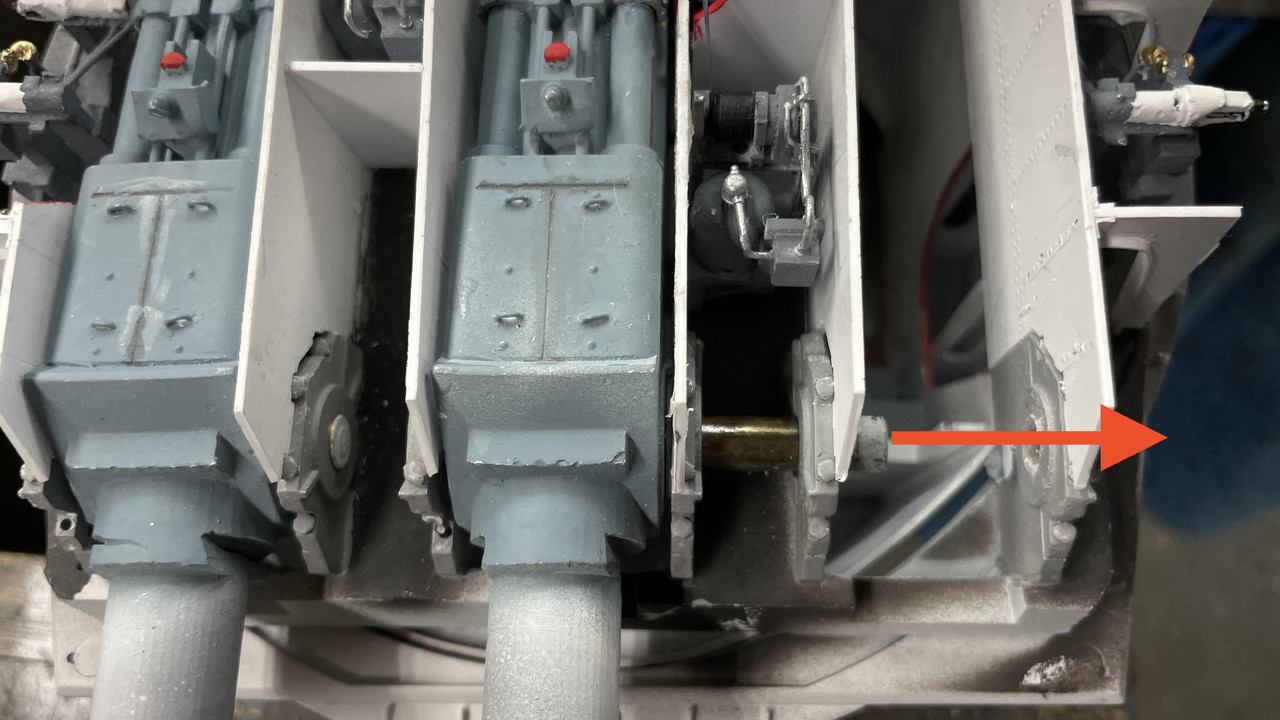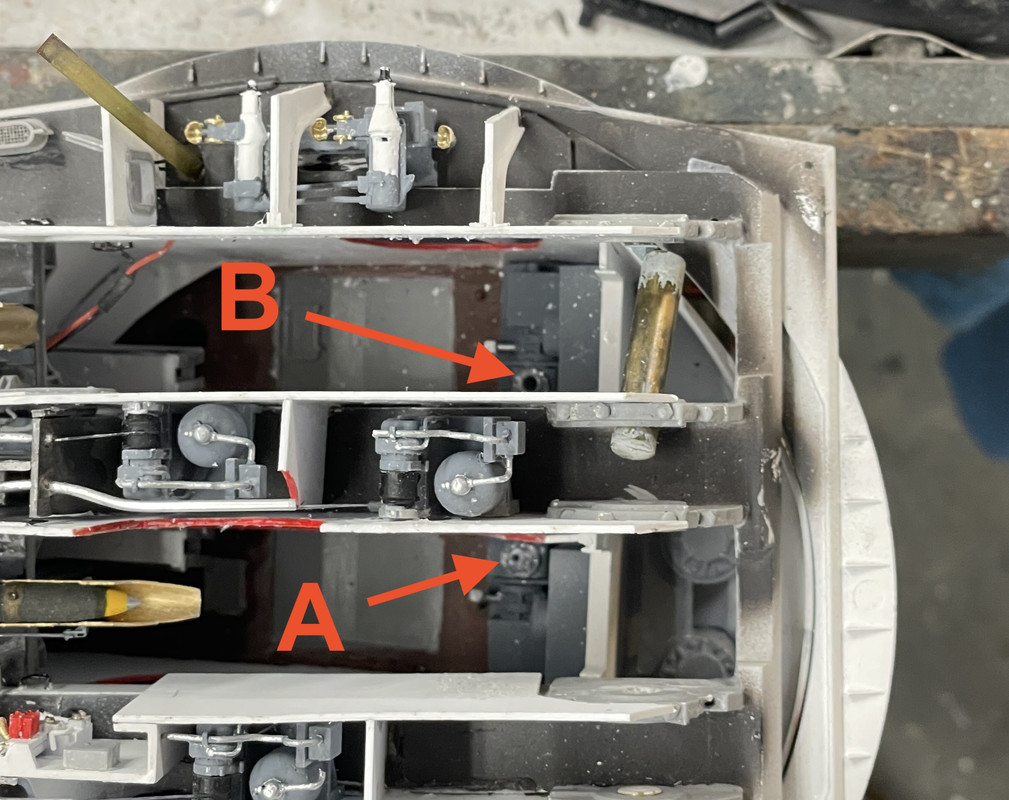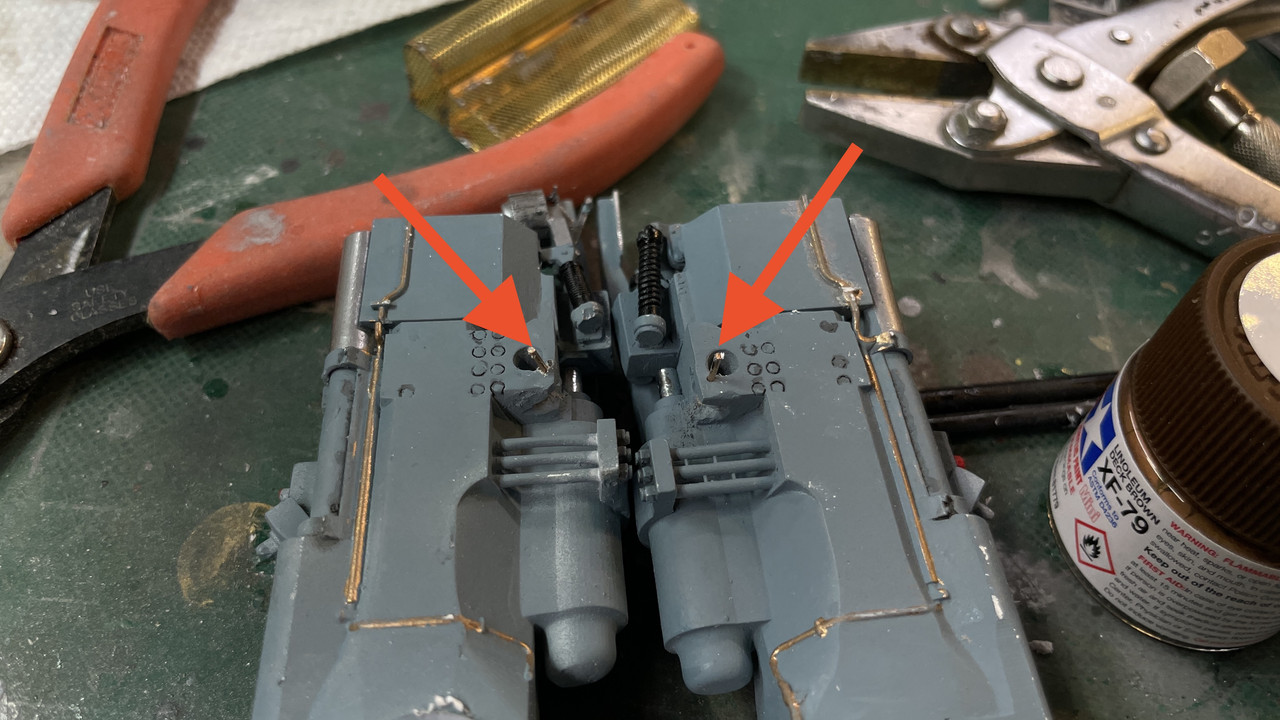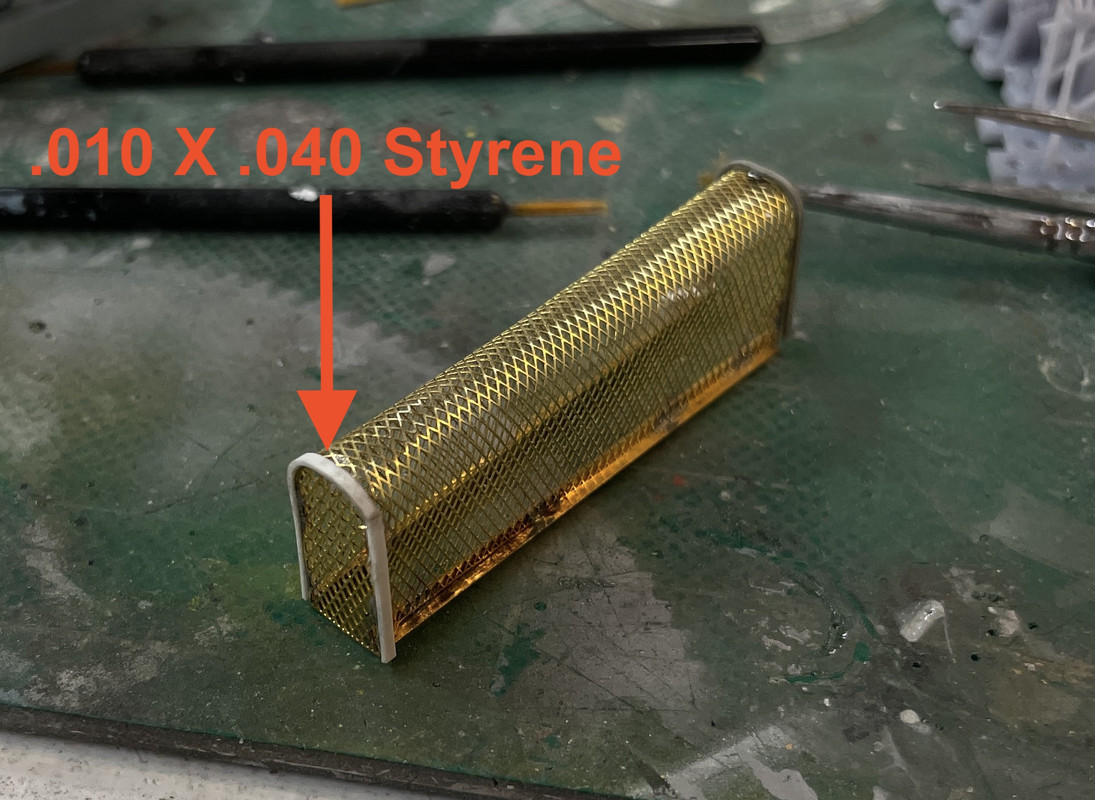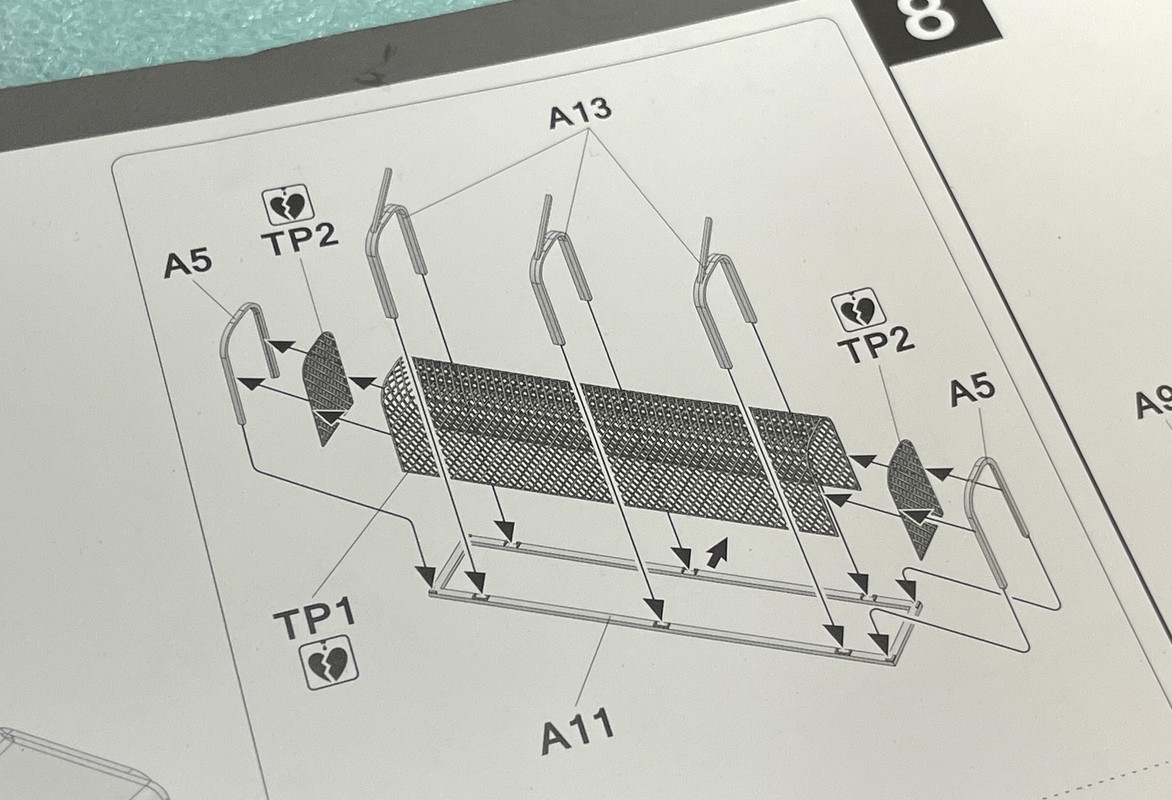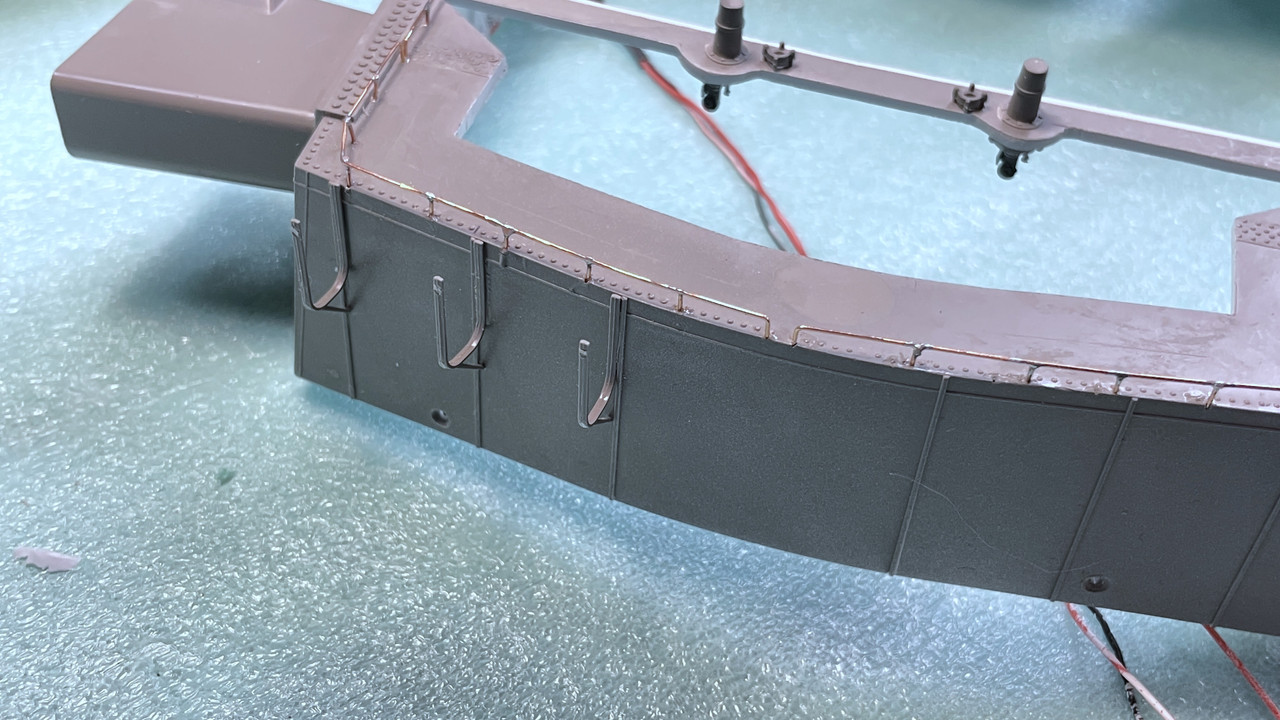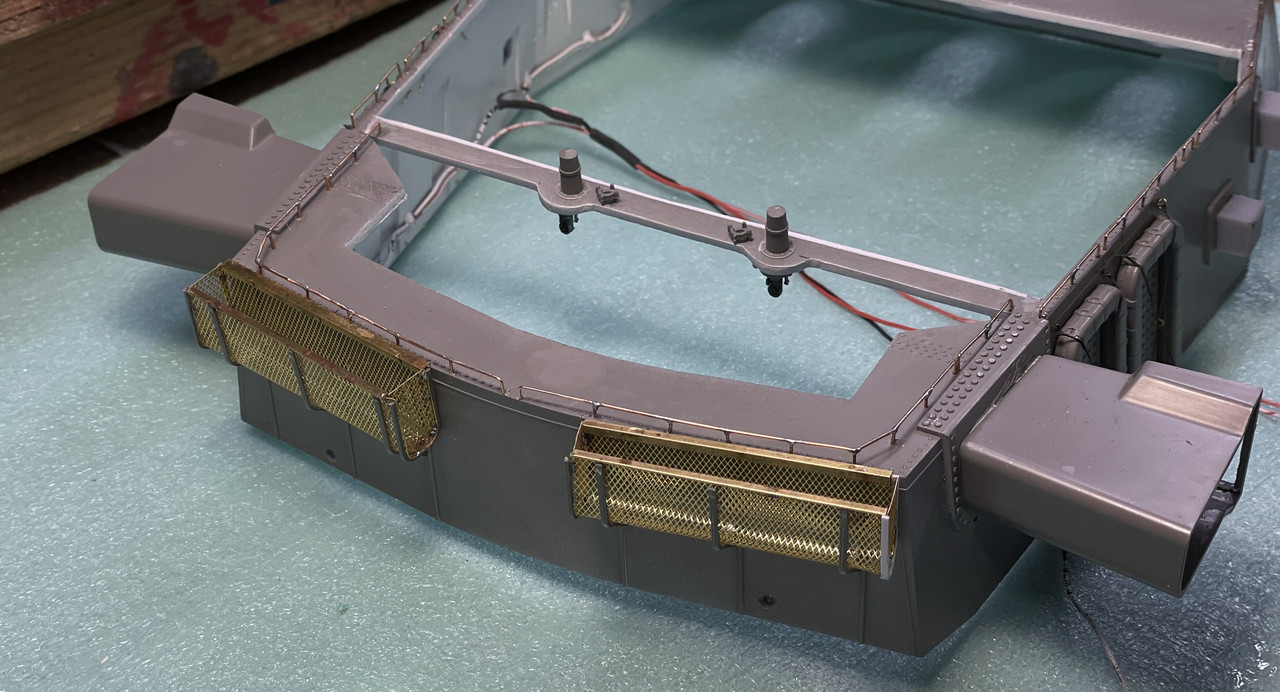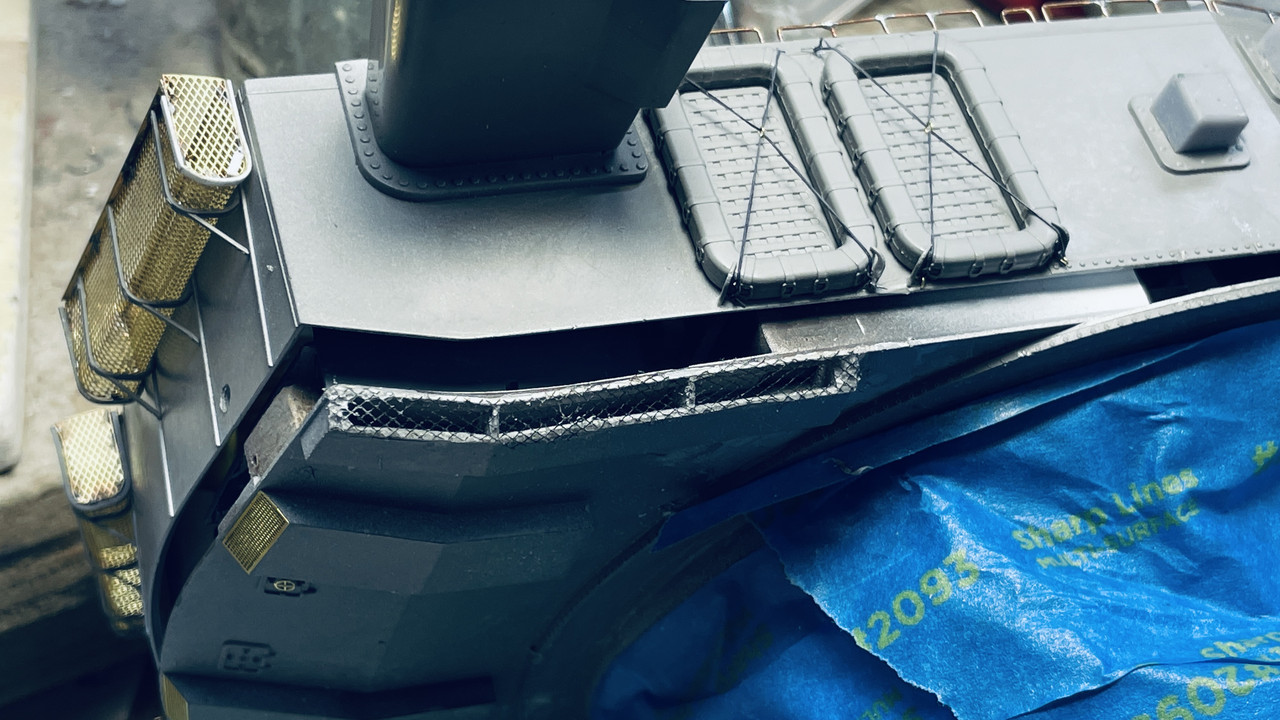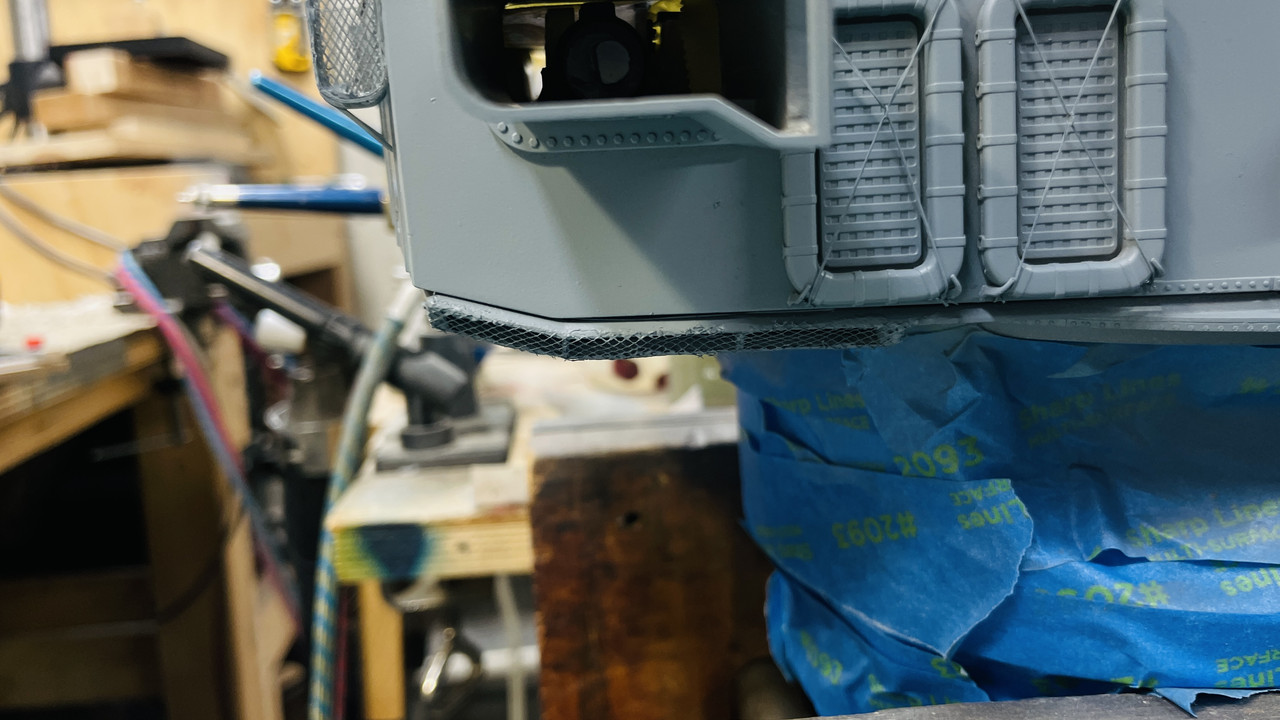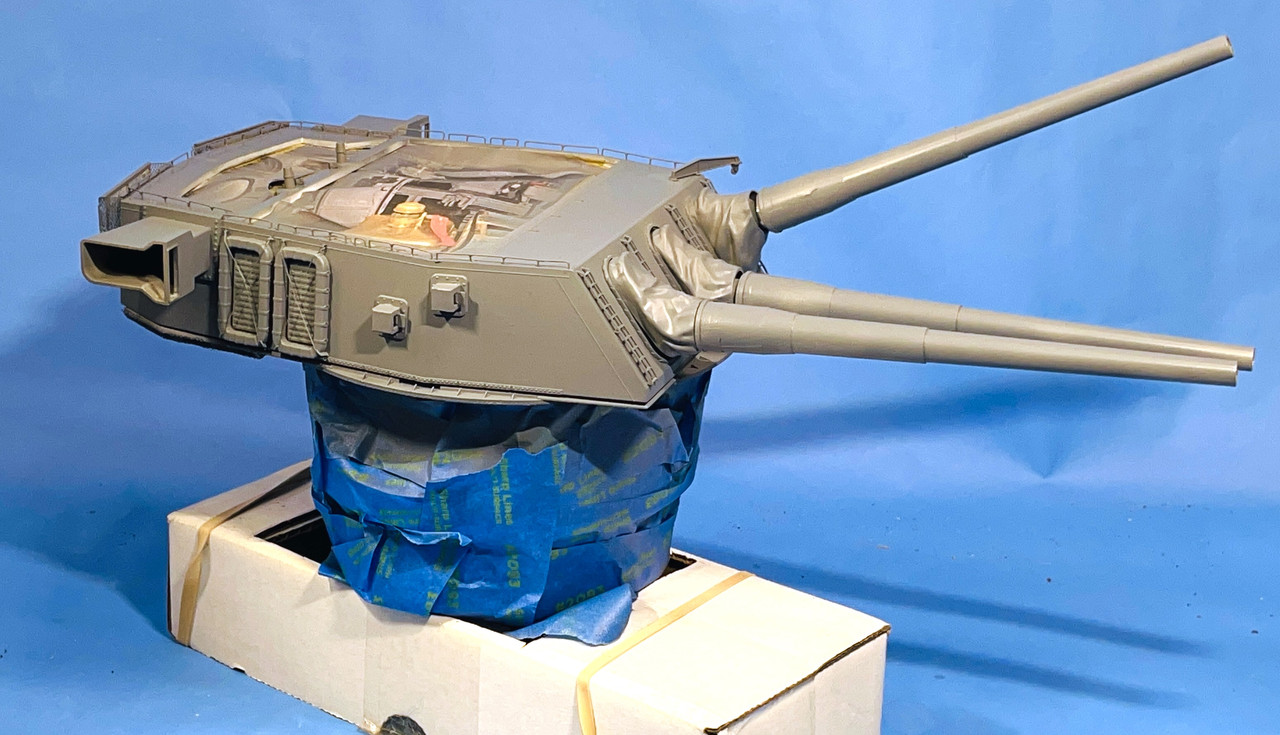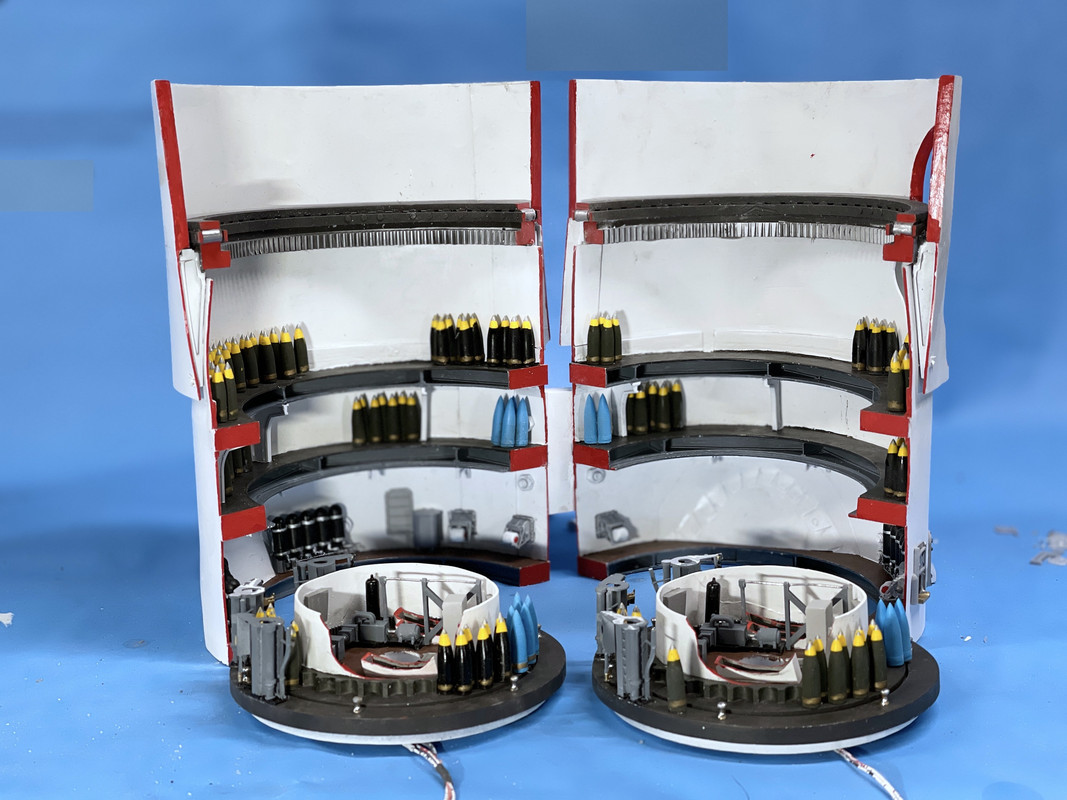Thanks! And the tips and tricks are mutual. I got two terrific tips on gluing Plexiglass that are going to solve a big problem for me. When I do that part of the job, I will elucidate.
First of all, the 1/16" pins plus J-B 30 minute epoxy did the trick. Those joints are not solid and will not let go. I ended up filling them again after I ground off the protruding pins and did a little bit of plastic damage. I have some touch up painting to do… again, and that will finish this up FINALLY.
I painted the primerman’s platforms with Allclad metalllic and then glued them onto the pan deck partitiions. There was much more surface area on the flanks of the styrene angle, than on their little tiny feet. I first tried to use clear silicone caulk as an adhesive since it might have some give and not be too brittle, but the stuff didn’t work at all. I removed all of it and then used my standby gel CA. The one on the right side of the image (left gun), is in the way of the projectile chase and I’ll hack at it to get the clearance. This one is out of sight behind the bulkhead so not matter what I do to it, no one will ever know, other than the myriad of people that read this stuff on four fourms.

I drilled a hole in the back compartment of the e-deck to pass the pan deck’s wiring down into the bowels of the structure. I
t was now time to join these two critical components. I’ve shown this months ago, but there are reinforcing ribs under the pan deck base to help minimize warping (it worked…sort of), and I then had relief cuts all over the e-deck to nestle into these ribs. The p-deck base did warp some with the midsection bulging downwards and that made for some very repetitive fitting steps to relieve all the high spots on the e-deck so the two would nest properly.
But lately, the two were not fitting correctly. The back section did, but not the part where the pinion gears lie. Today I spent a lot of concentration and using my iPhone’s light to see if I could find what was impinging that was keeping them apart. First i found that the hydraulic lines running up to the p-deck were too tall, so I chopped them down, but the fit did not improve.
Finally, I found the culprit. When I rebuilt the bulkheads that surround the pinion gears, I neglected to cut the relief notches into the new parts. It was a small triangle of the new material that was too high. When I trimmed it, it again fit as it did before.
It needed some concetrated and even pressure to hold the two decks in close contact so I could apply the epoxy. Again, I resorted to using a disposable syringe to apply it precisely.
I arranged to big Quickie clamps with some blocking to get the joint tight. I had to be very careful since the clamps could exert enough force to crush the e-deck’s side walls. I tightened until I started hearing some ominous creaking sounds and then backed off.
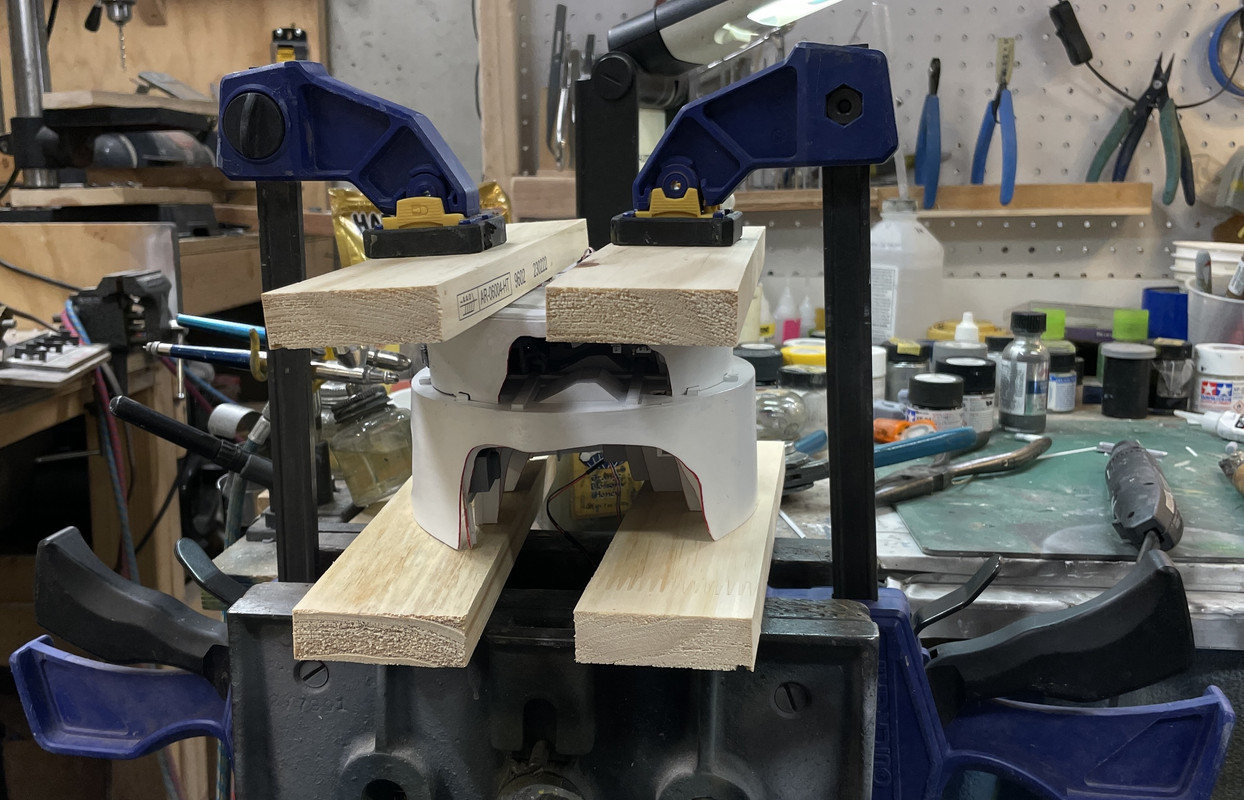
Here’s the syringe that applied the epoxy. I purchased a set of syringes of different sizes and interchangeable tips just for this purpose from Amazon.
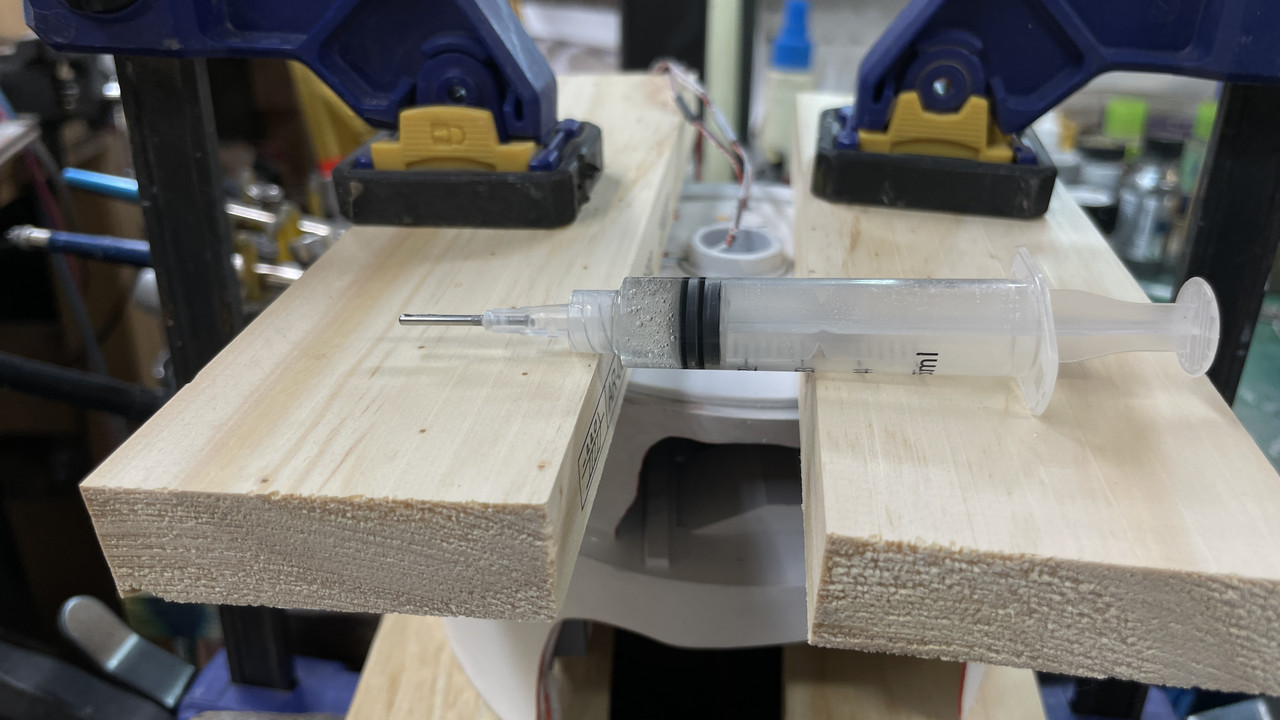
Here’s two views of the final joint. There’s just a couple of spots that will need cleanup. I will paint the epoxy next session when it’s fully cured.

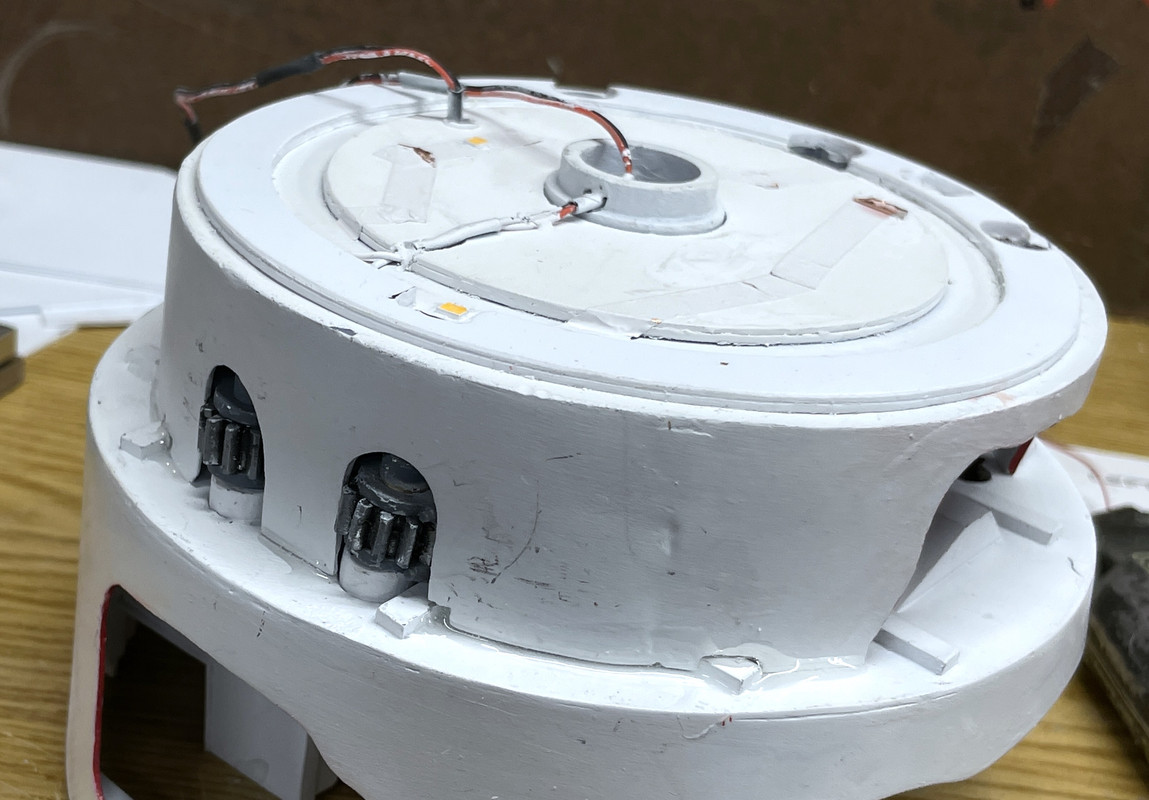
Here’s a normal view of the assembly. This was the singularly most challenging of the joints since it wasn’t stabilized by the central column. The other decks don’t even have to be glued together to be concentric.
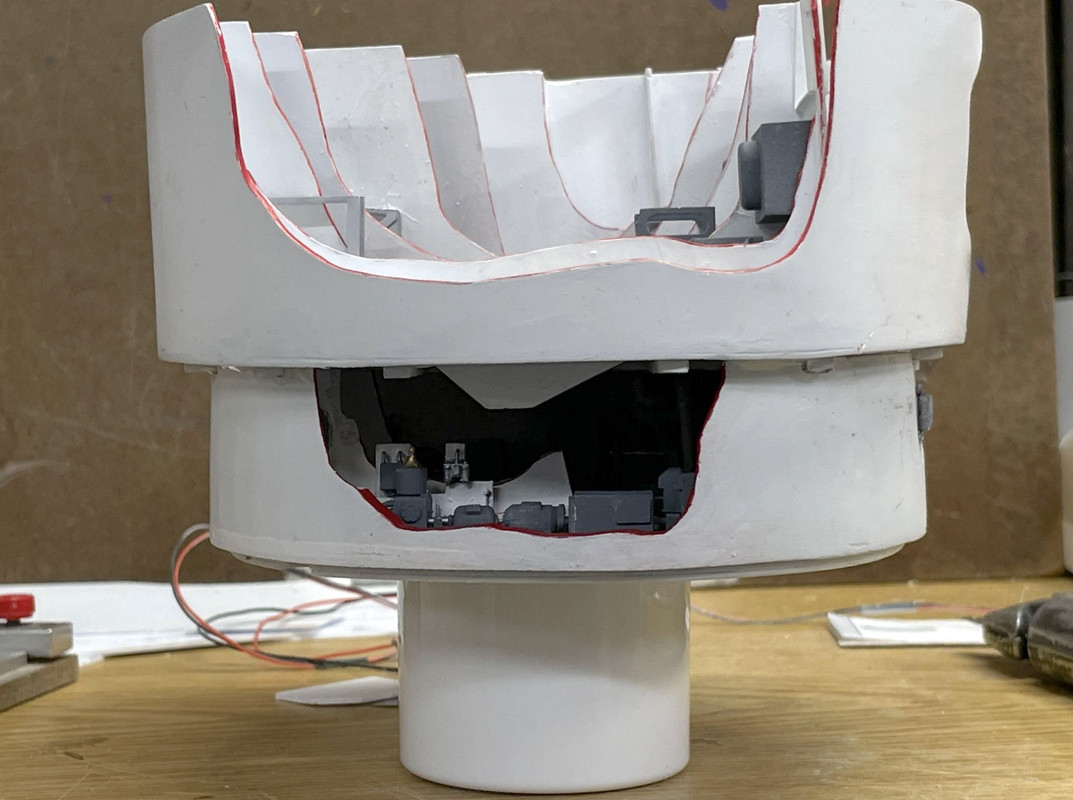 It’s mighty dark in there… needs some lights… oh… wait… there are lights. Glad I thought of it ahead of time.
It’s mighty dark in there… needs some lights… oh… wait… there are lights. Glad I thought of it ahead of time.
I was now ready to finally finish up the gun house and create the six bulkheads that separate the gun pits. I had drawings of these that were made a long time ago before all this stuff was actually created, but they were pretty close. The did nto reflect the new learning of how people entered and exited the gun pits, especially the center gun alcove and the big opennings in the side guns.
Here’s the right side gun’s left bulkhead now fitted to the little bit of it that’s included in the gun compartment printing. I noted on this picture where I’m going to re-attach the foot rungs and will do it off the model so it won’t be so difficult.
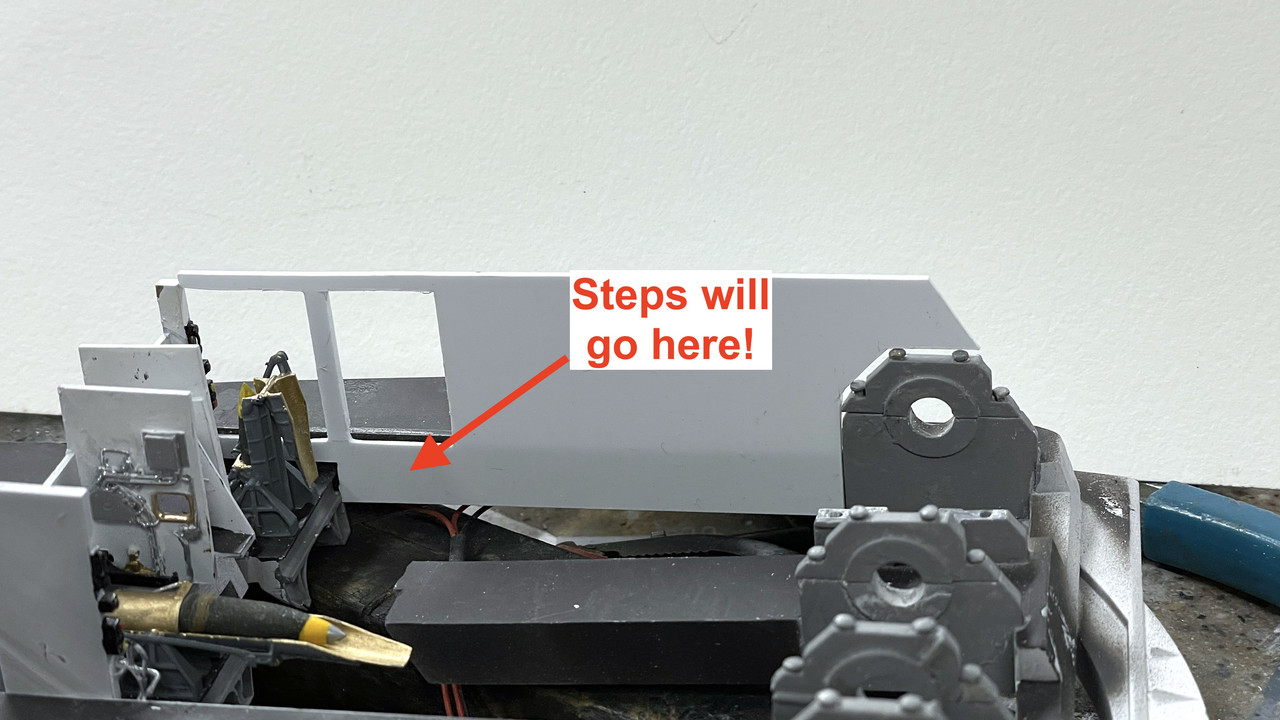
And I built the center gun’s right bulkhead and attached it to the alcove. Here is it test fit with the rear compartment. The white sytrene is so nice, I may not paint it.

I have four more buikheads to fit and then I’ll assemble the pan deck to the gun girder, kit base and kit deck part. Once that’s done, I’ll install the gun compartments, powder trunks with the one where the powder car is exposed, the hoist machinery, and the side aisle details. Before I do the above I have to decide whether or not to laminate real wood planking to the main deck.
All in all, it sounds like a lot of work, but in reality, it’s not too much since (I think) all the show stoppers are now taken care of. This is pretty much straight model building, not naval architecture. I should make my deadline.
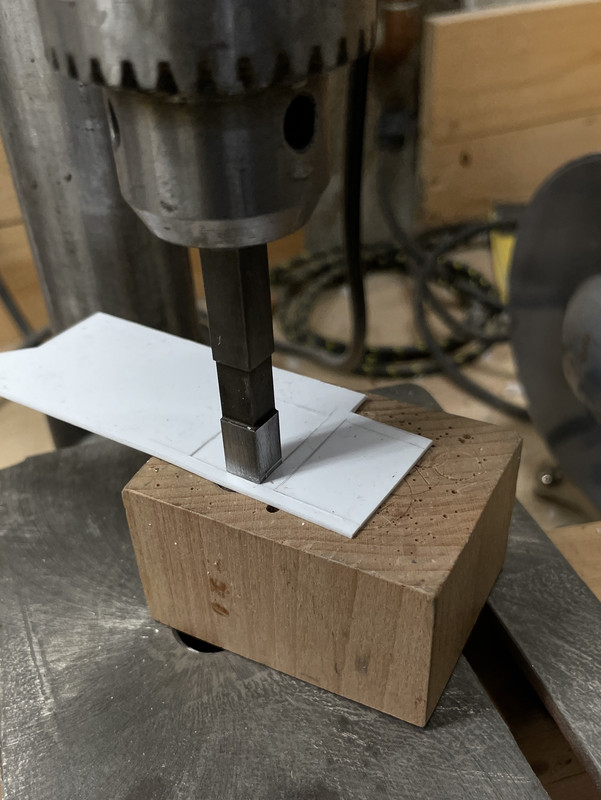
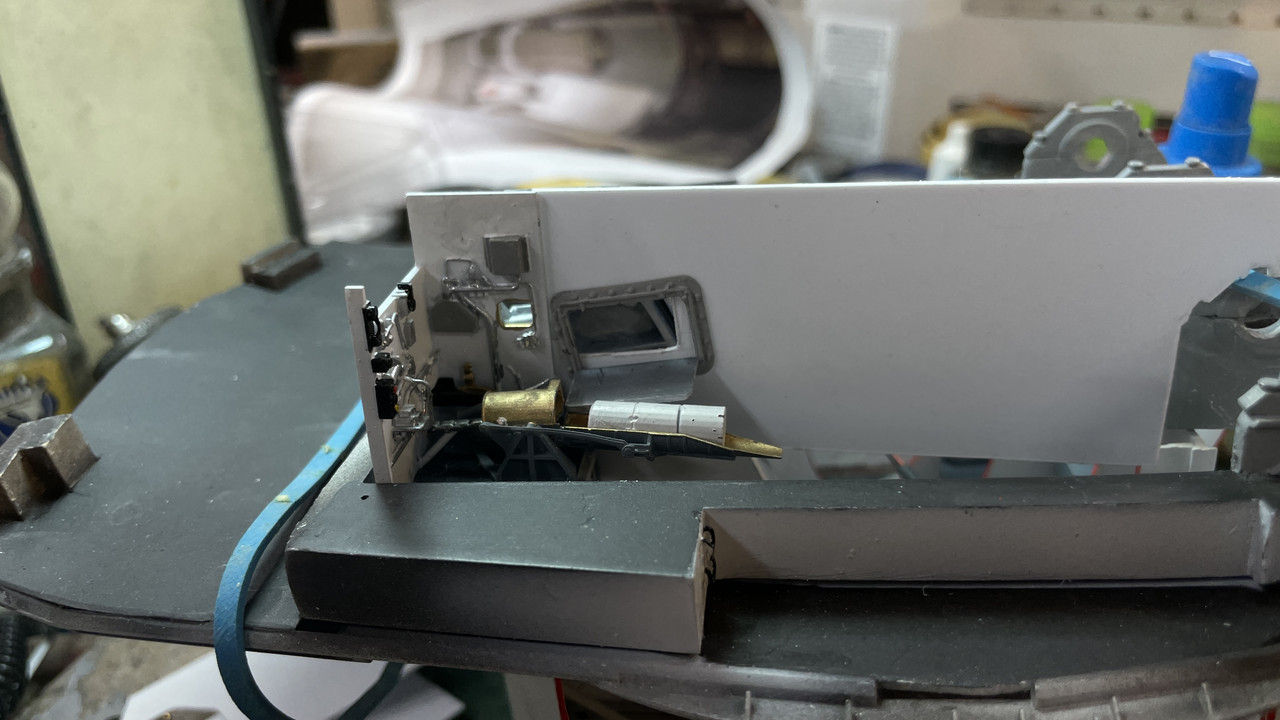
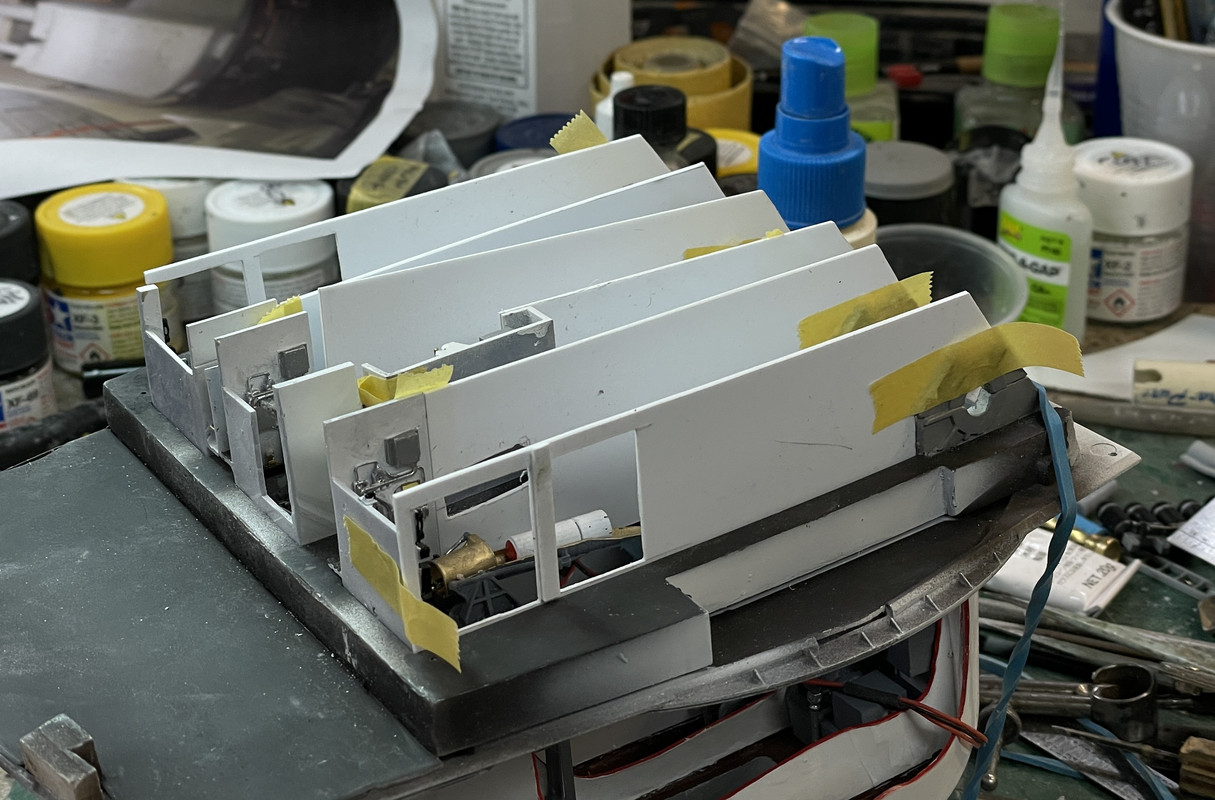
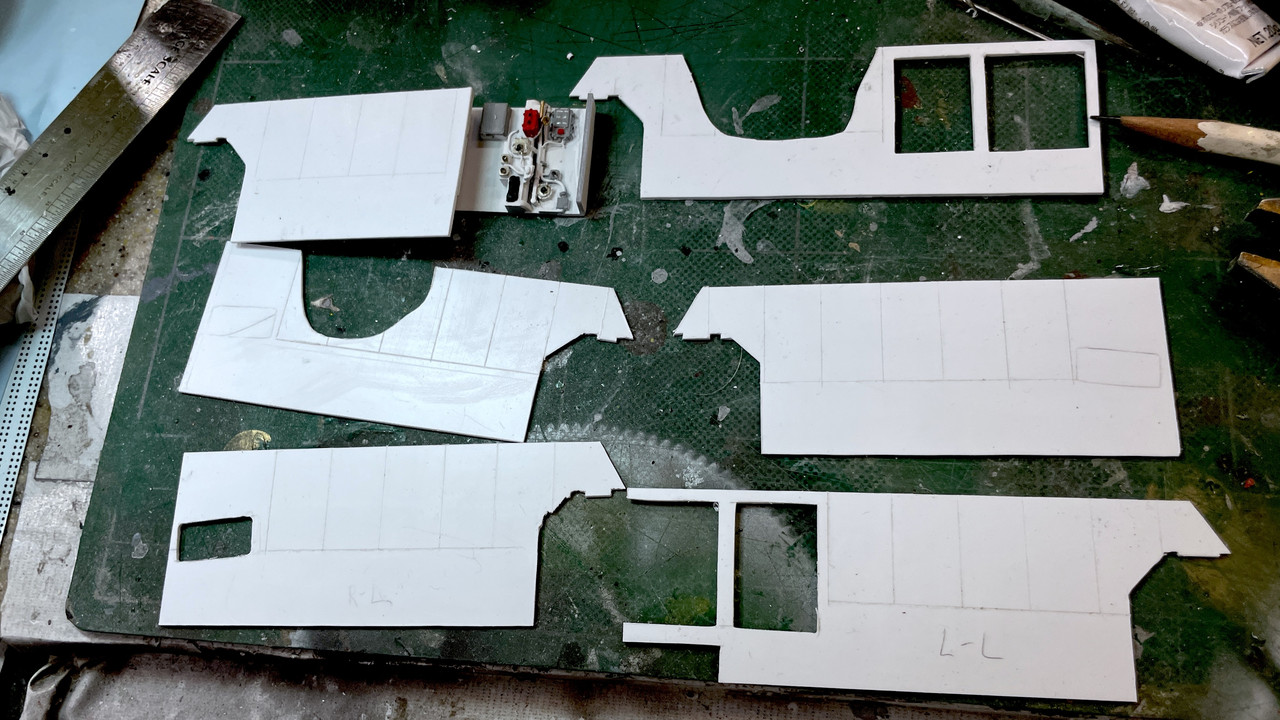

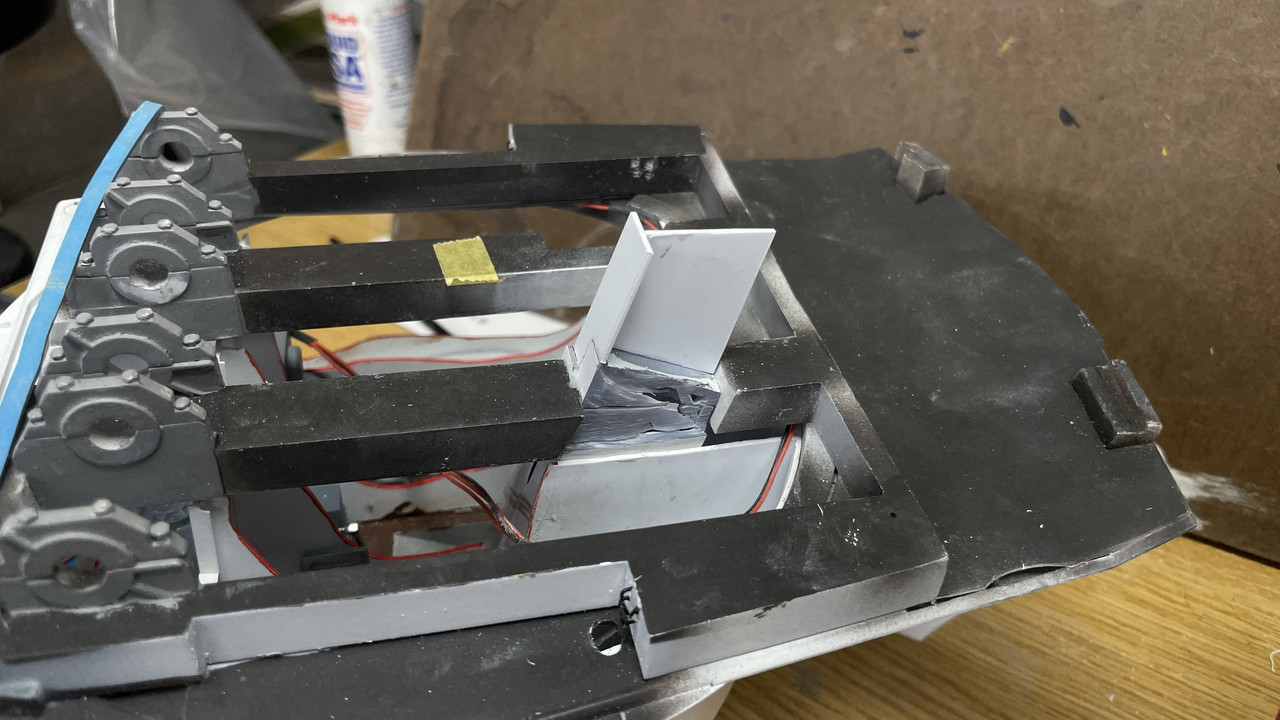
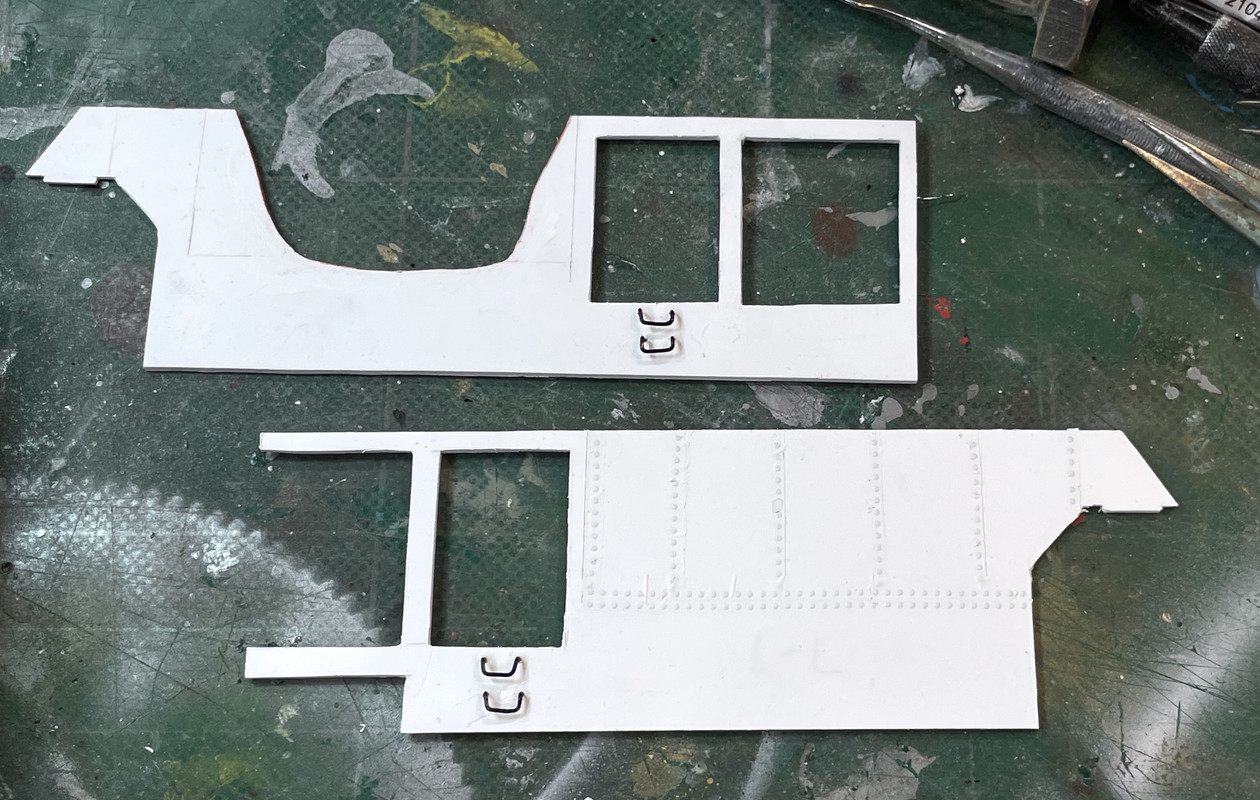
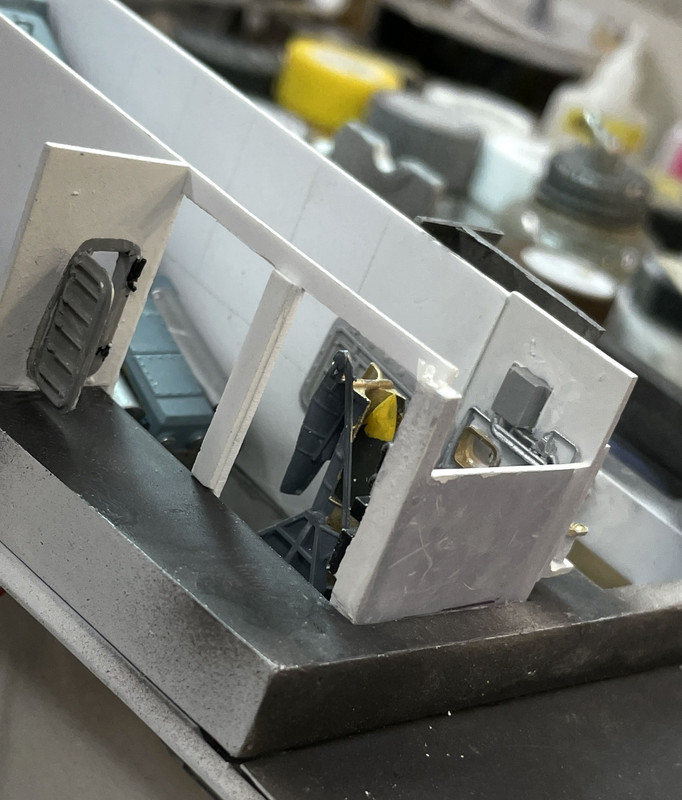
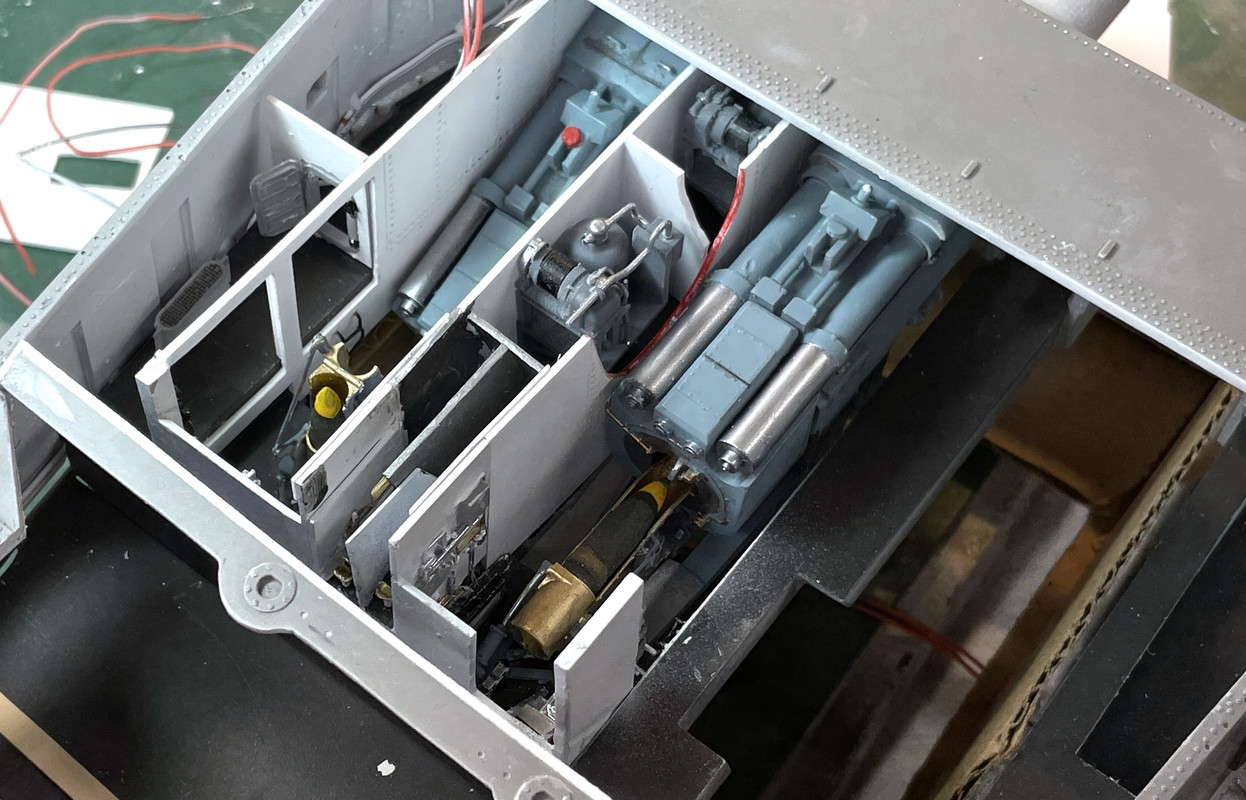
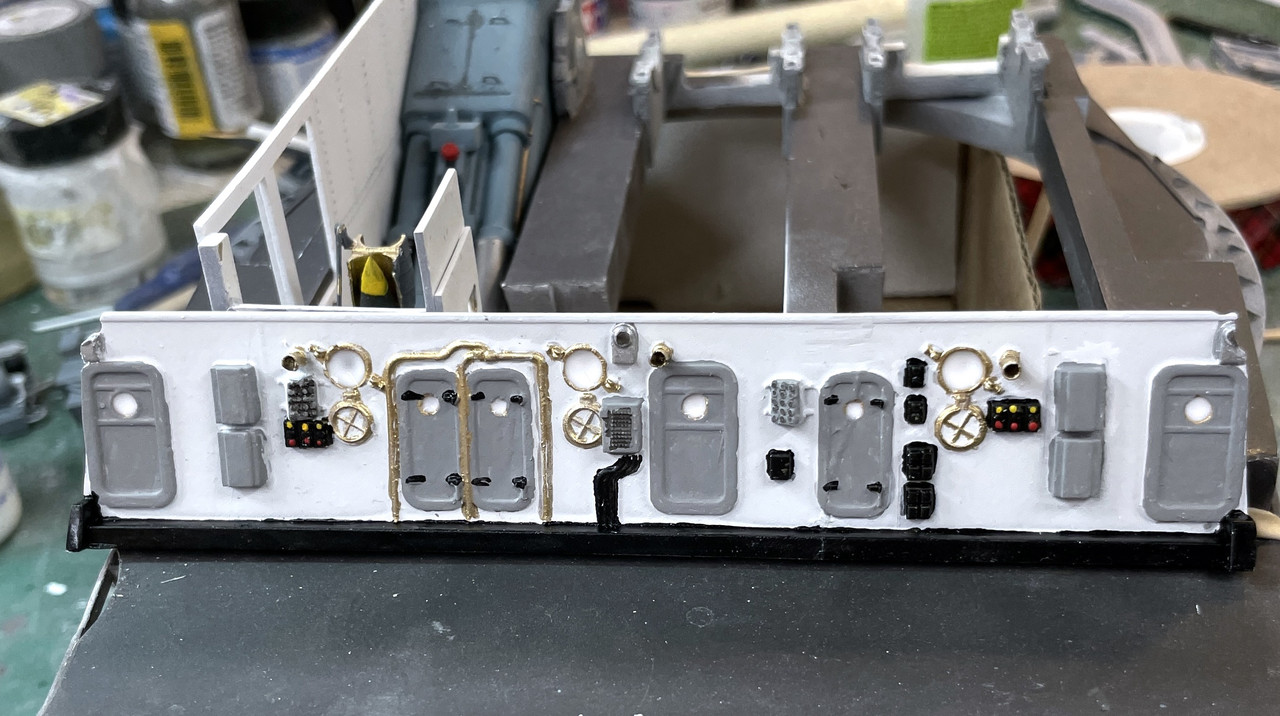
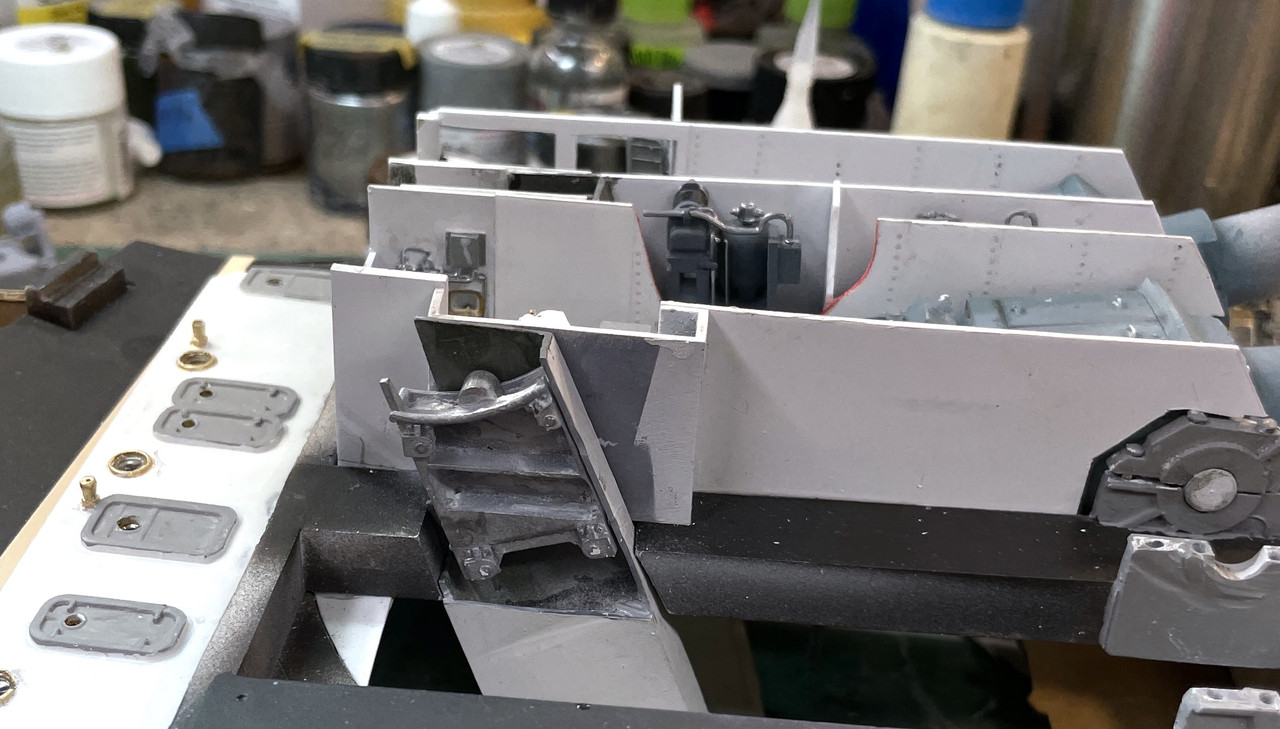
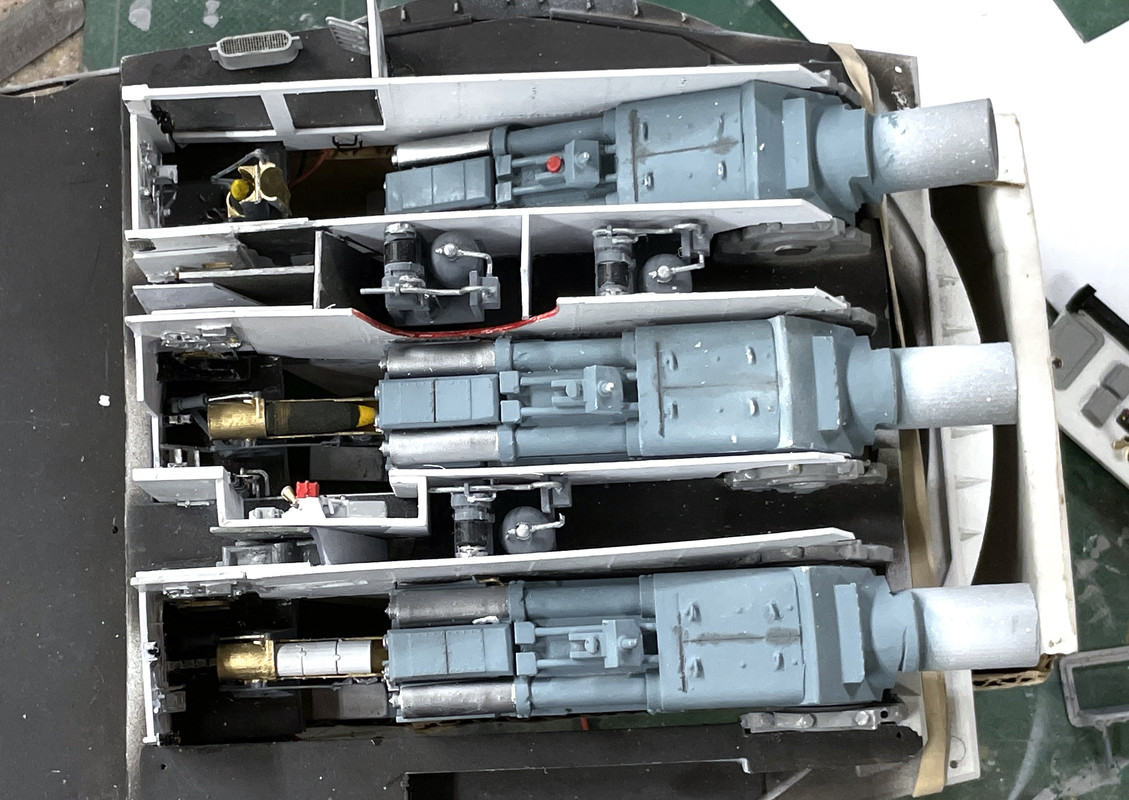

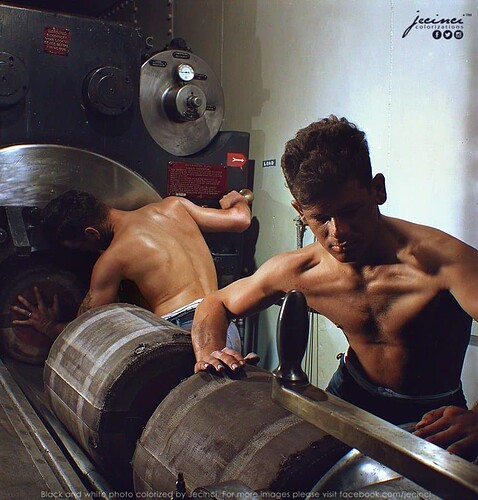
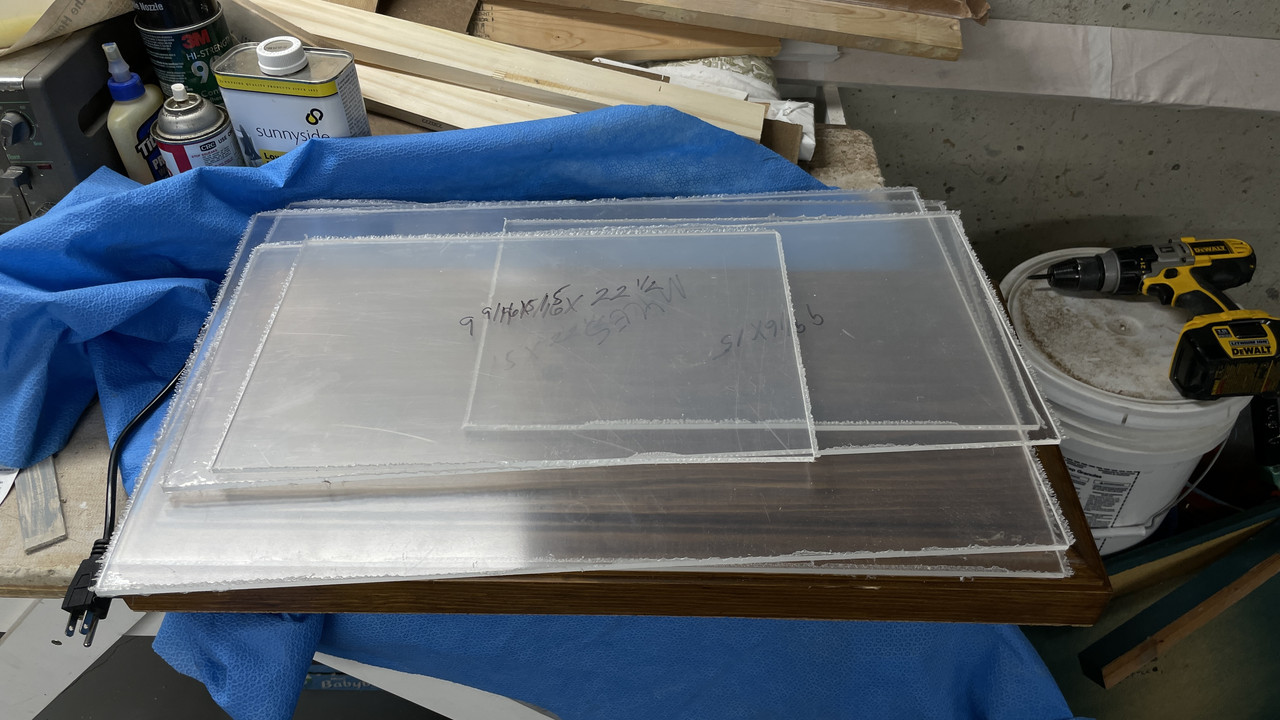
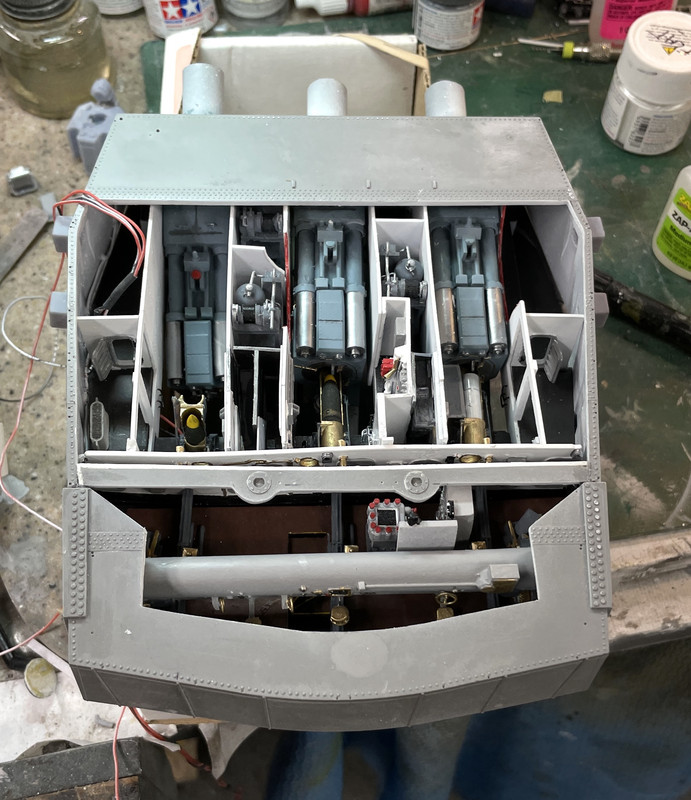
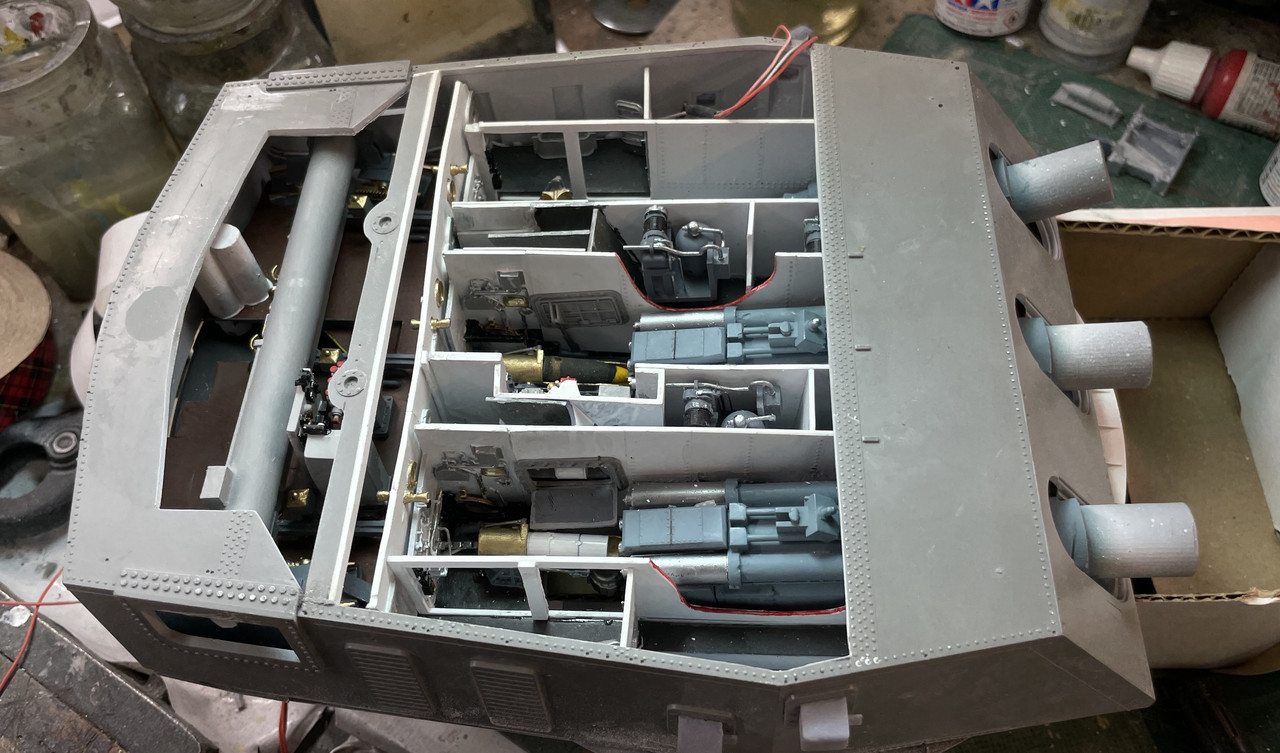
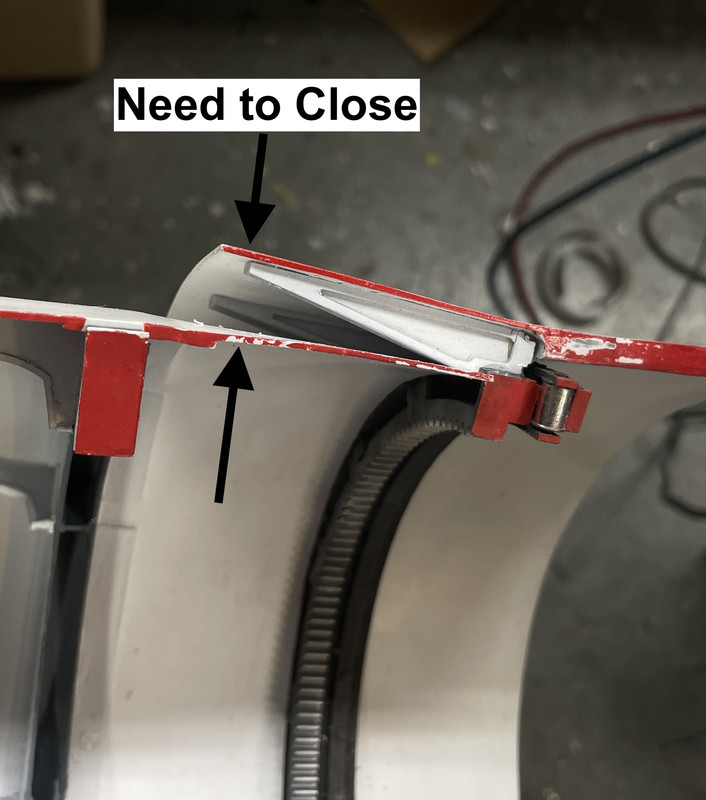
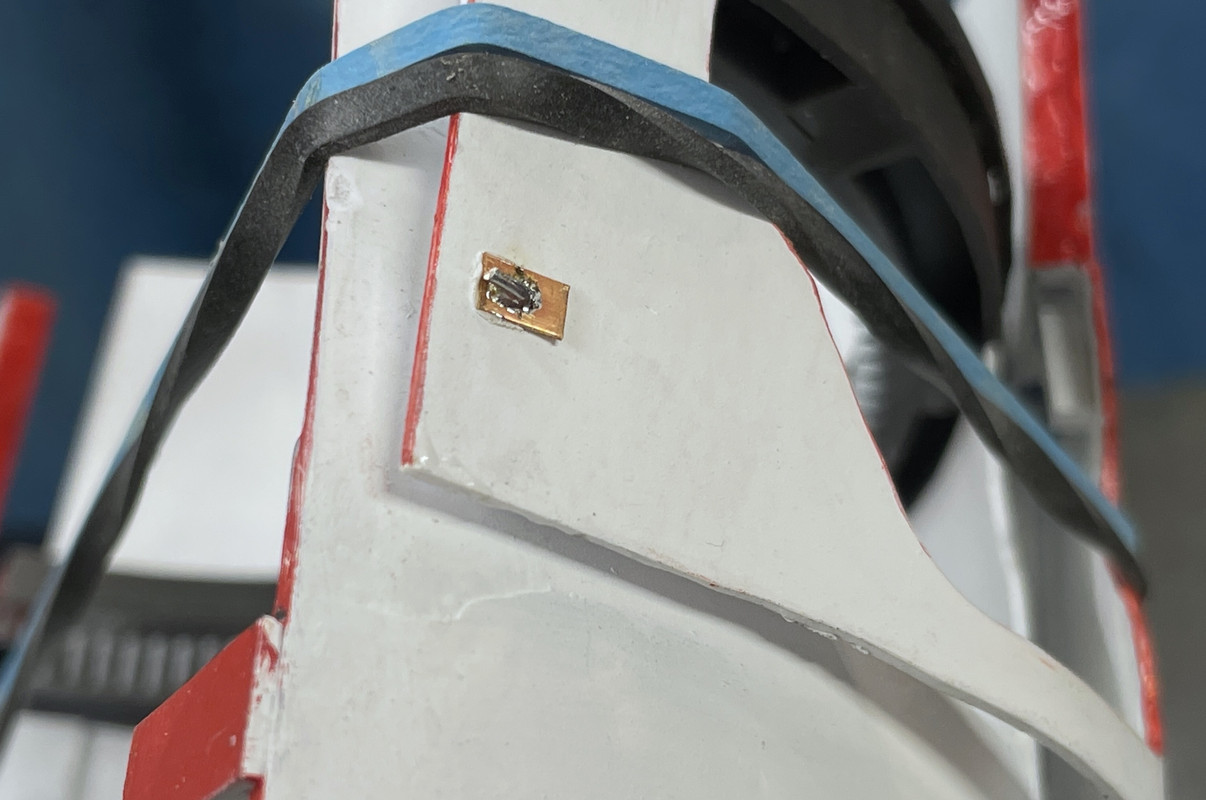
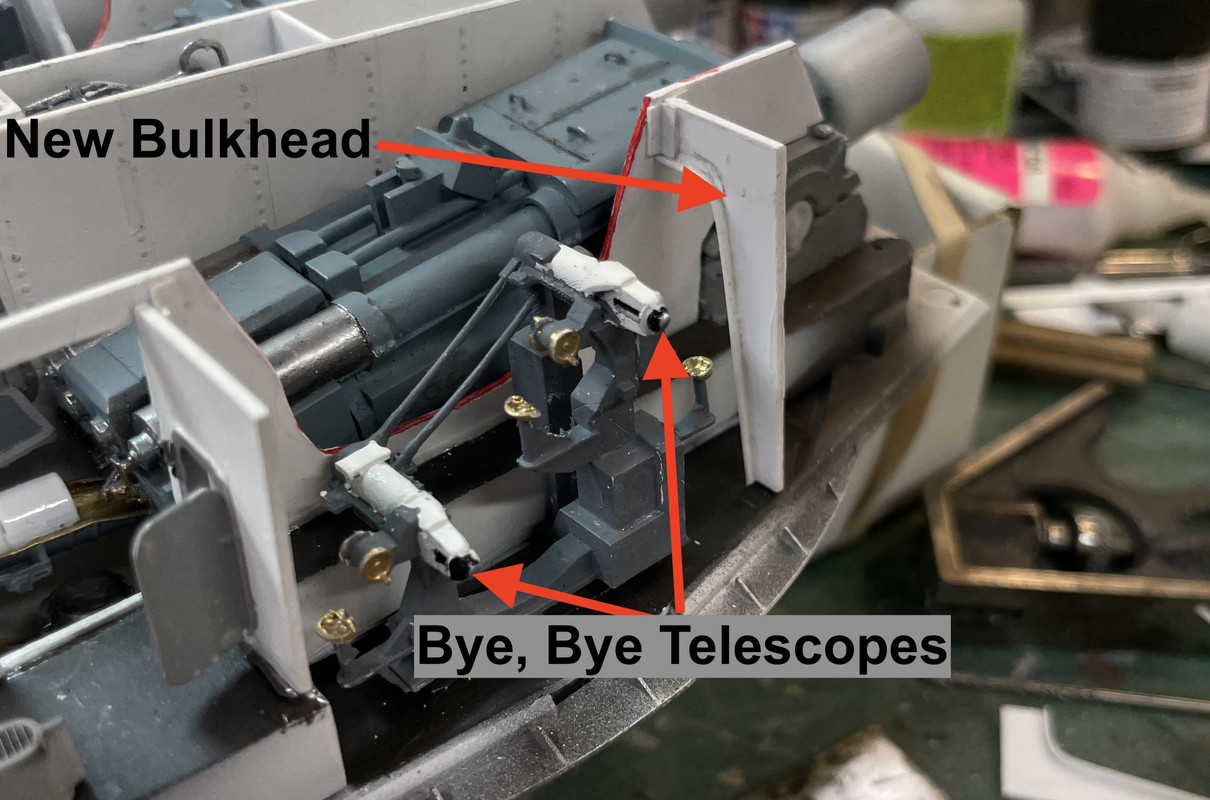
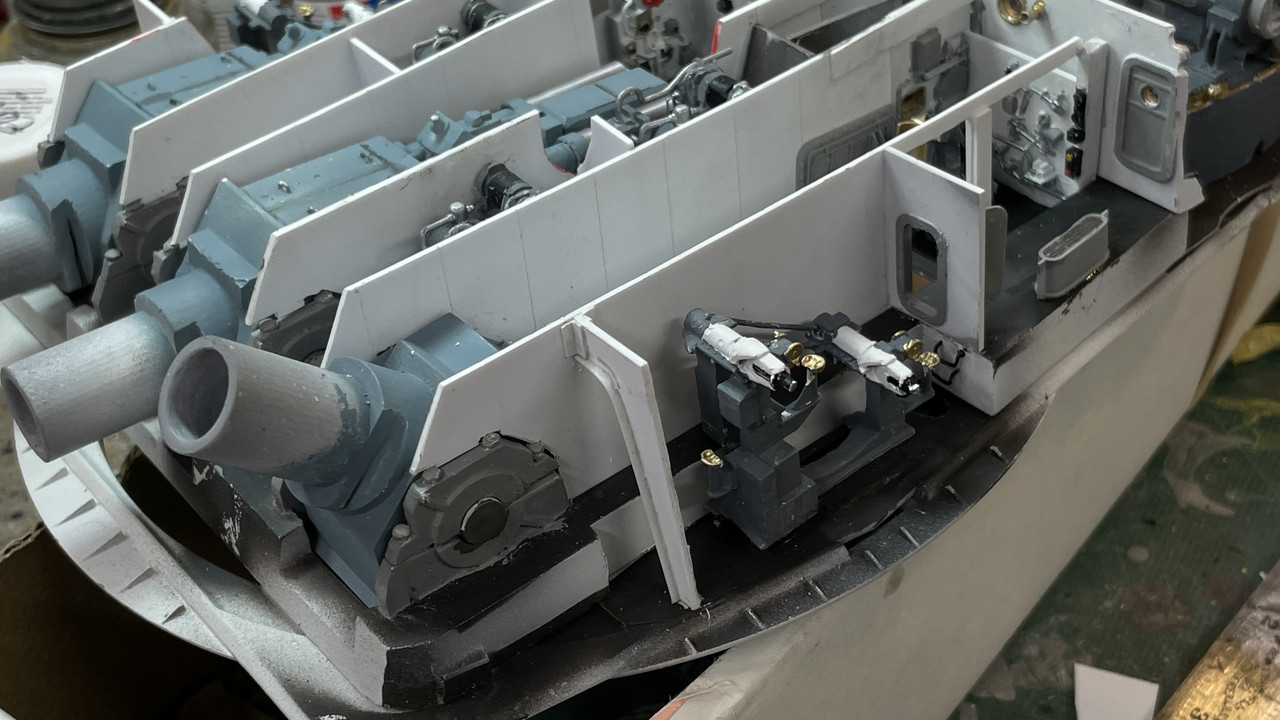
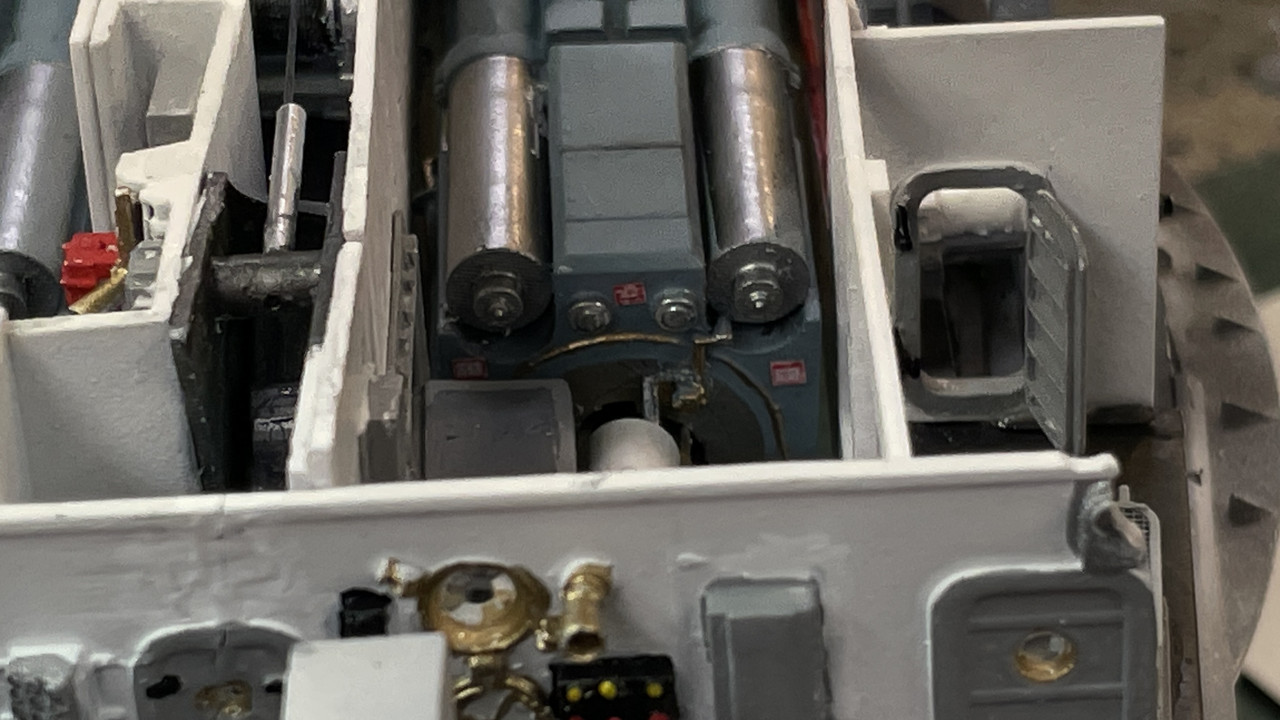

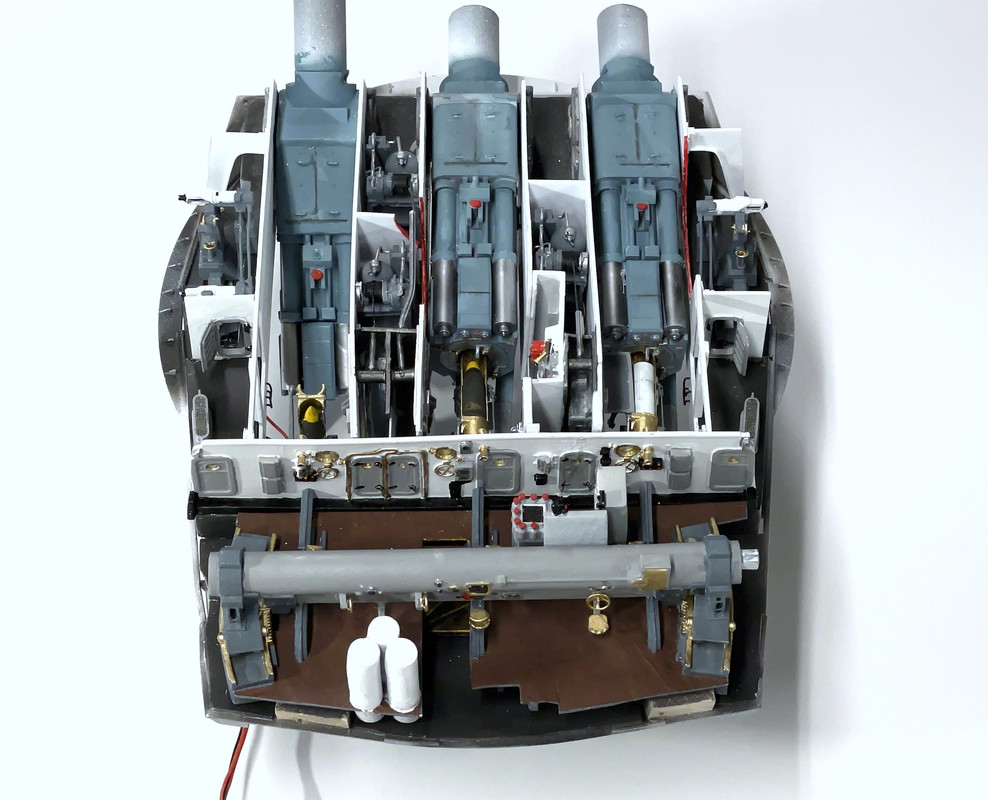
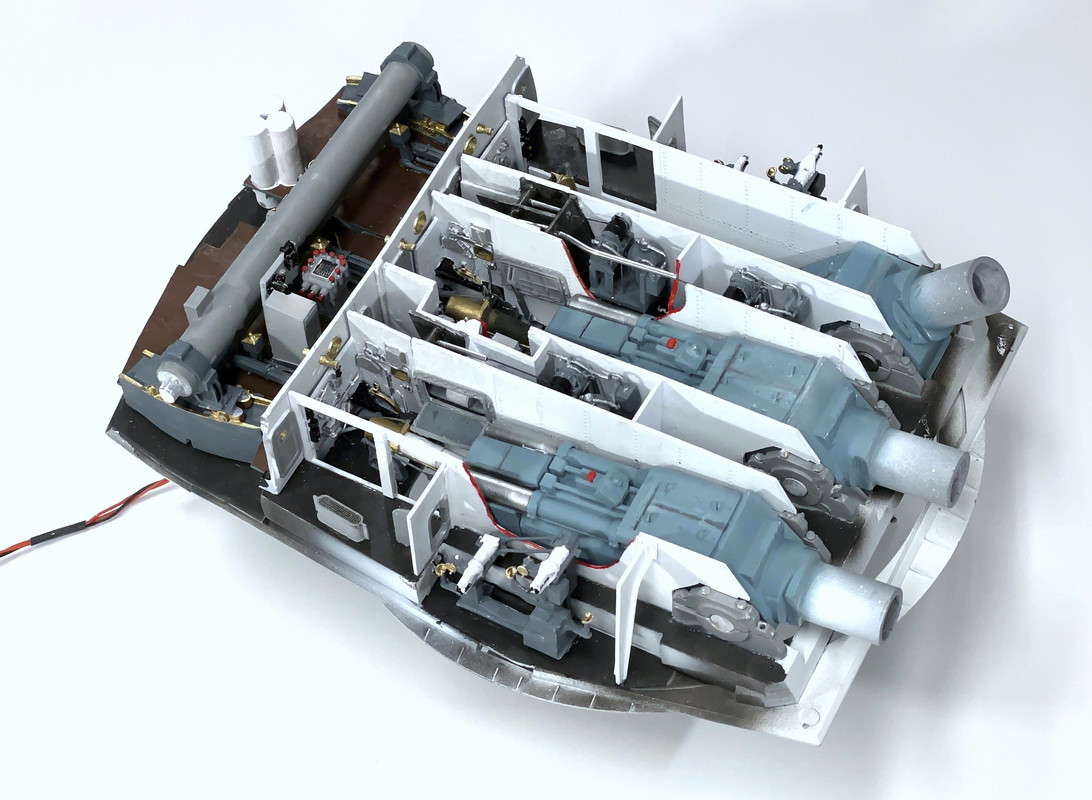

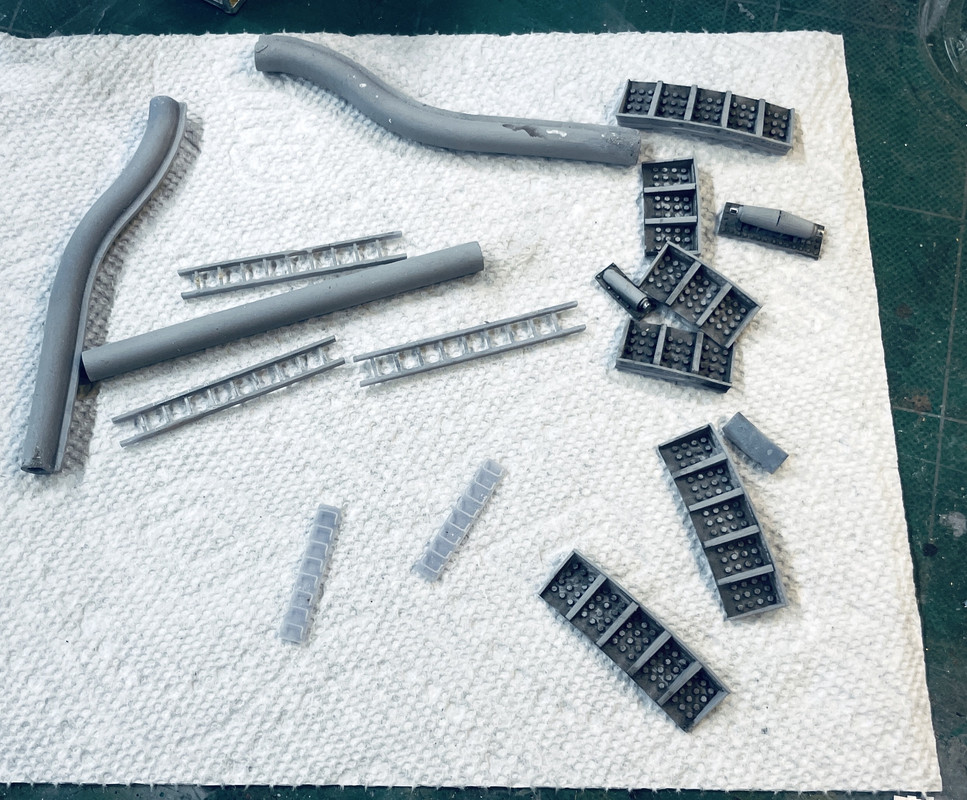
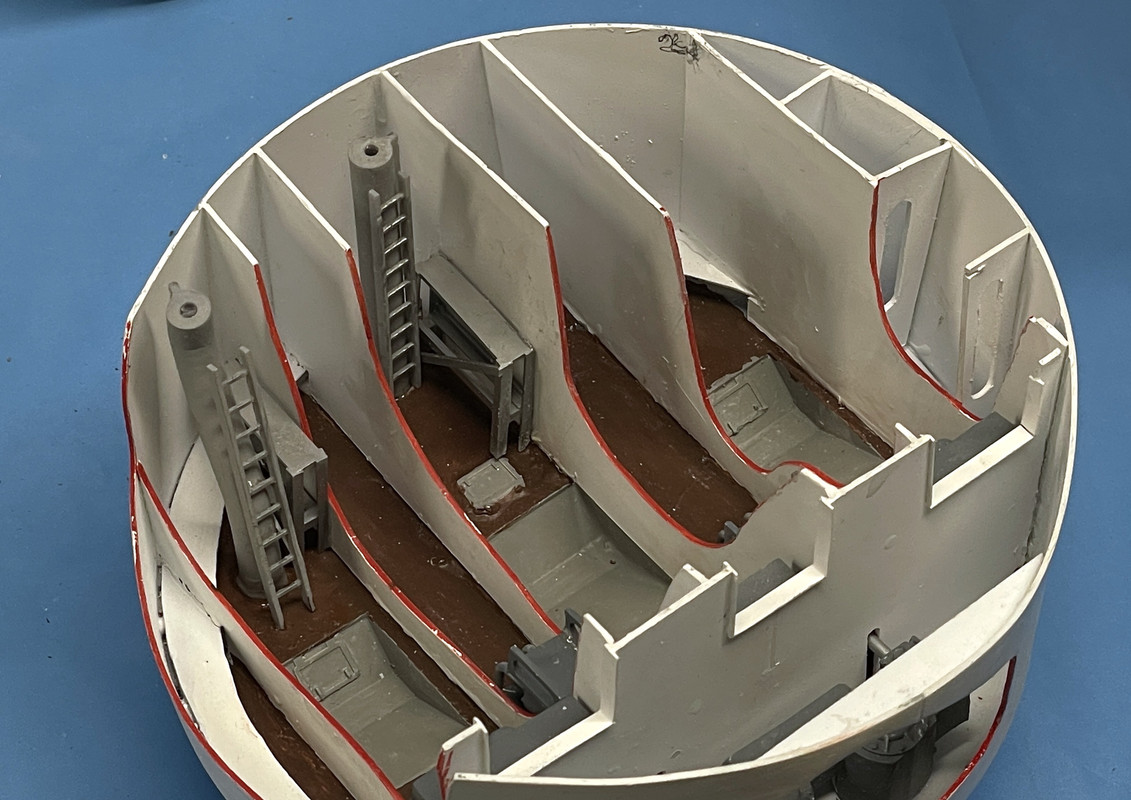
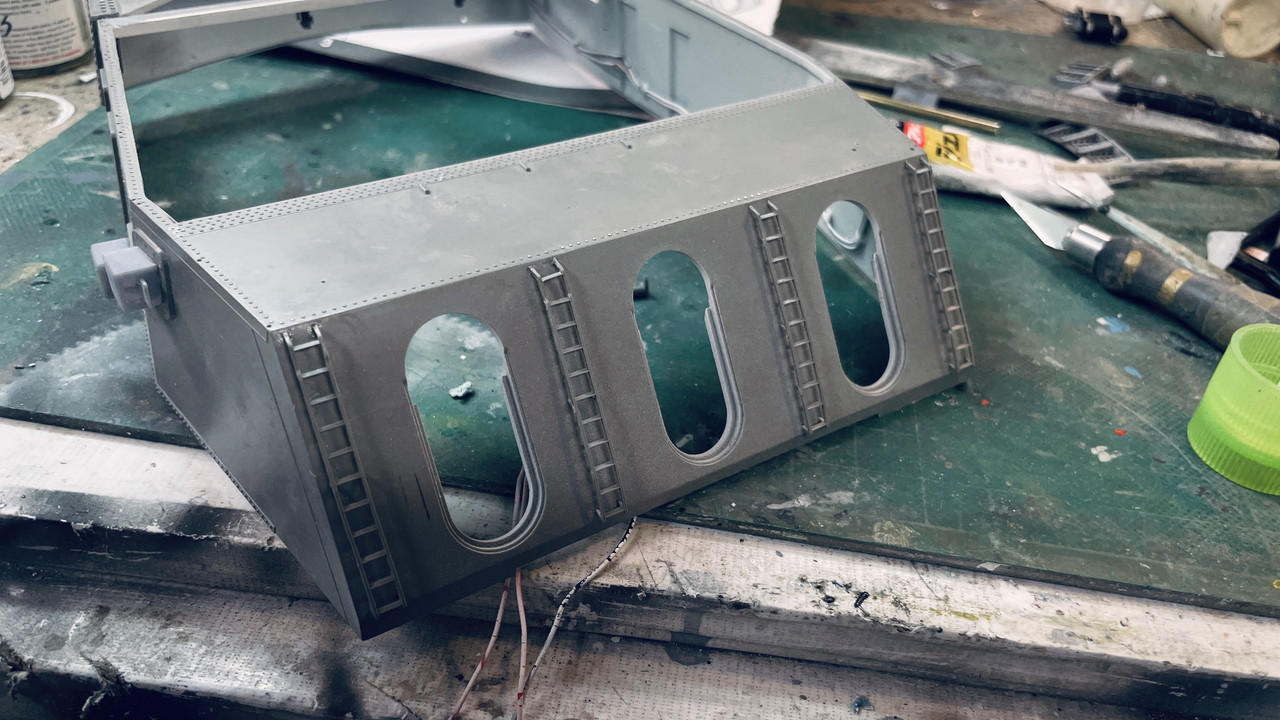
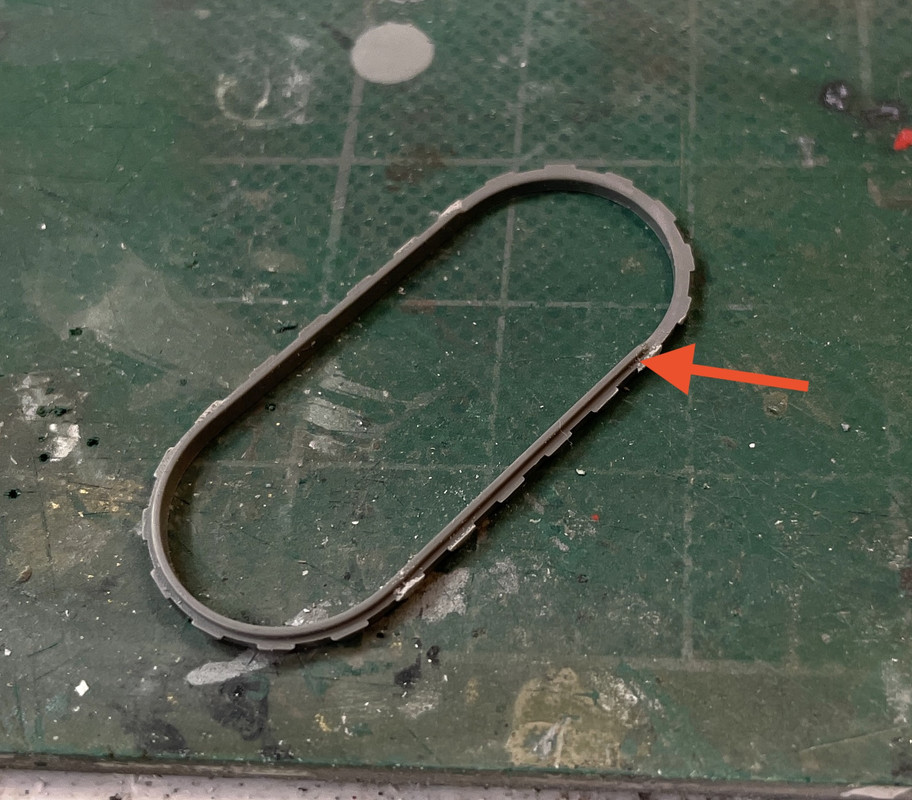
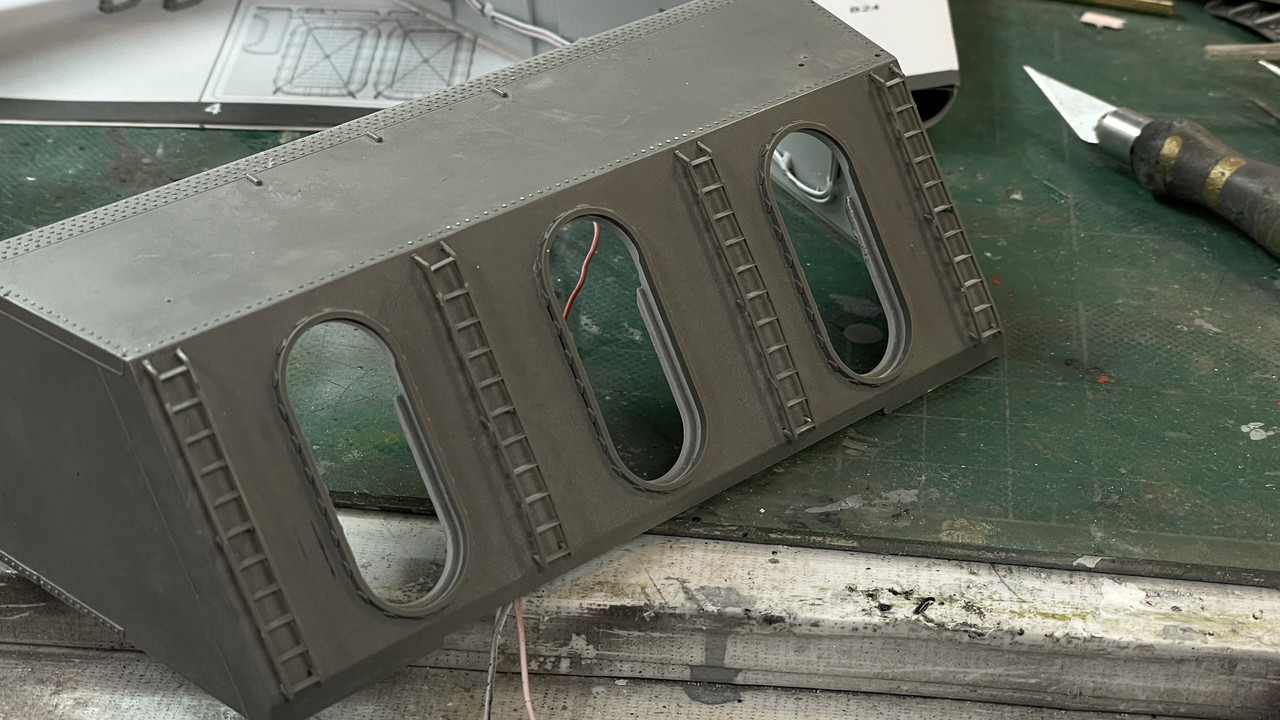


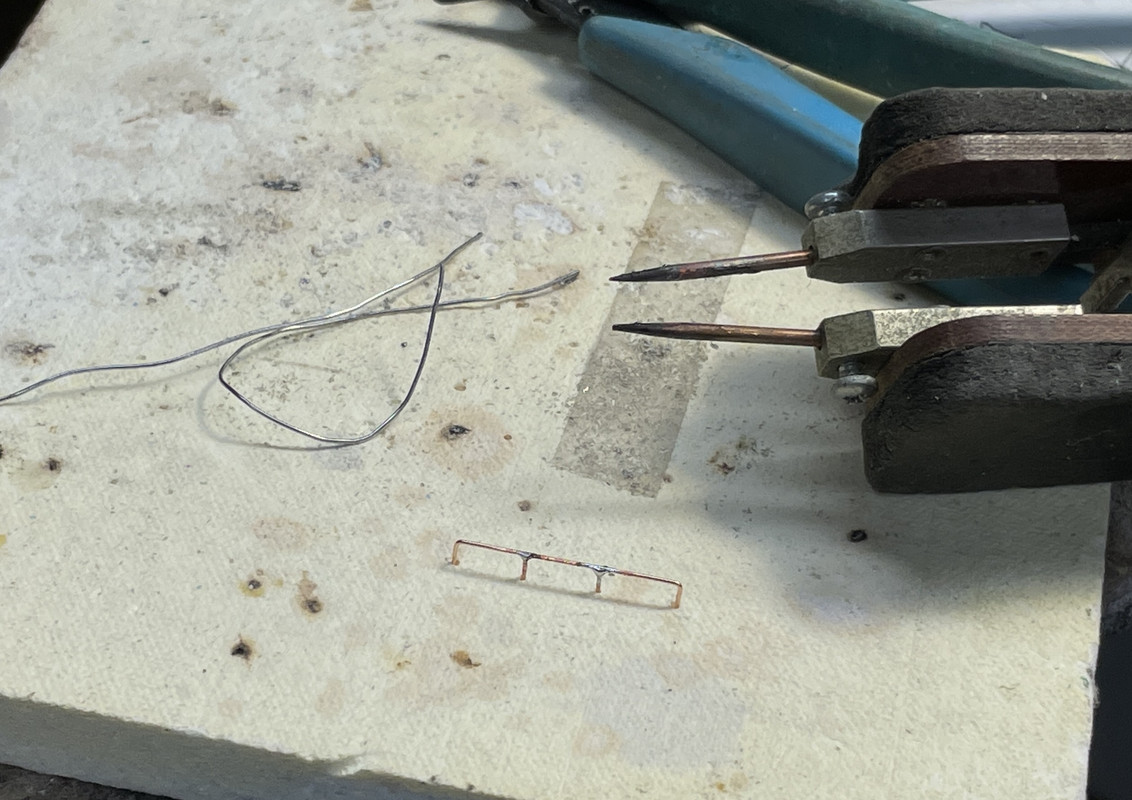
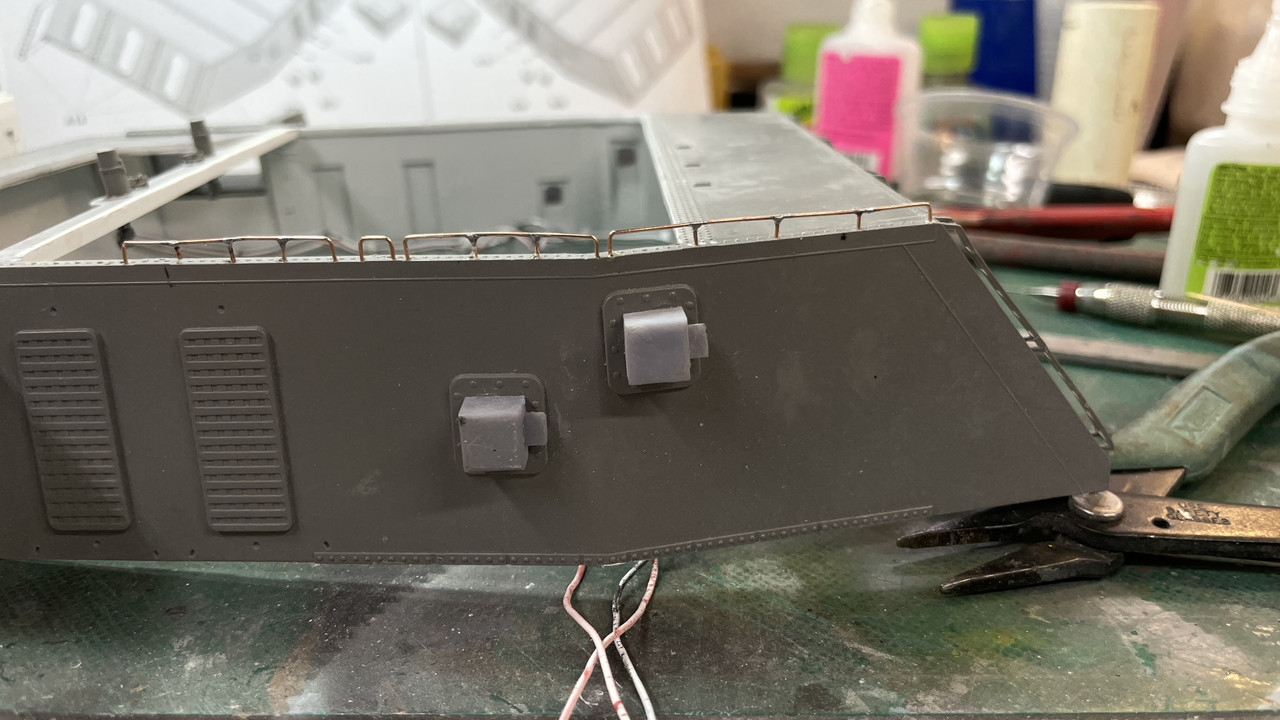
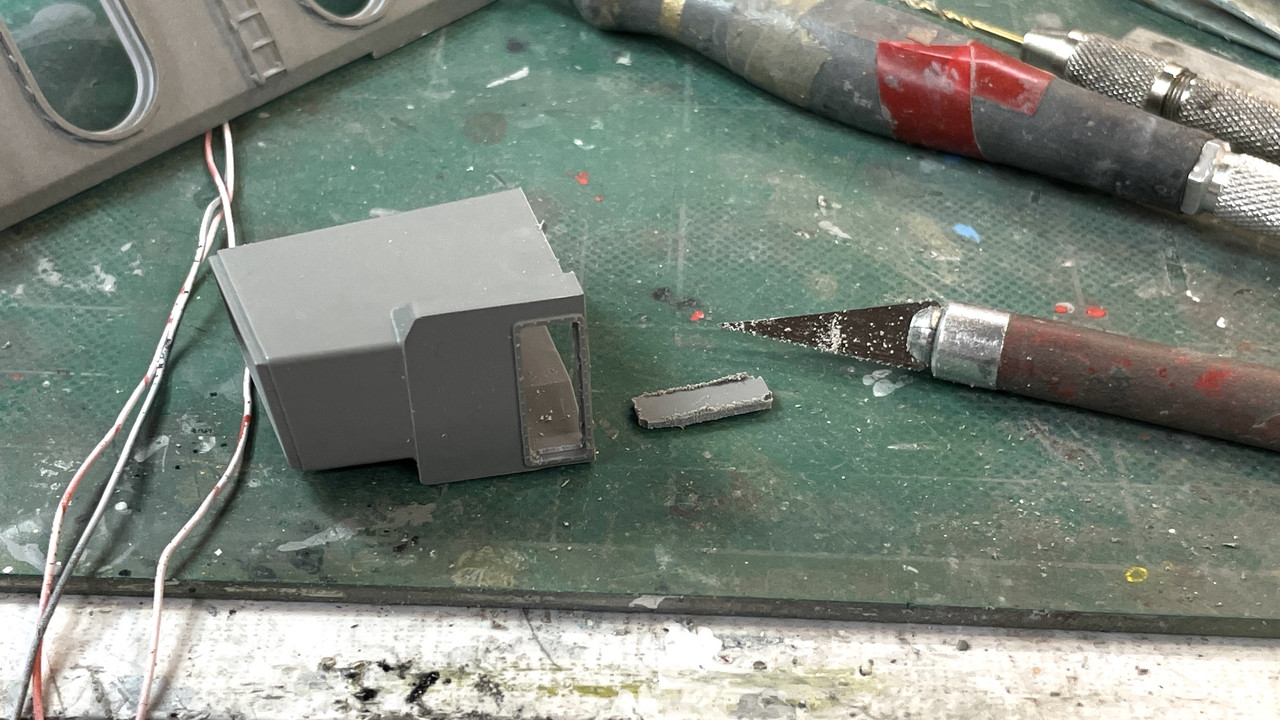
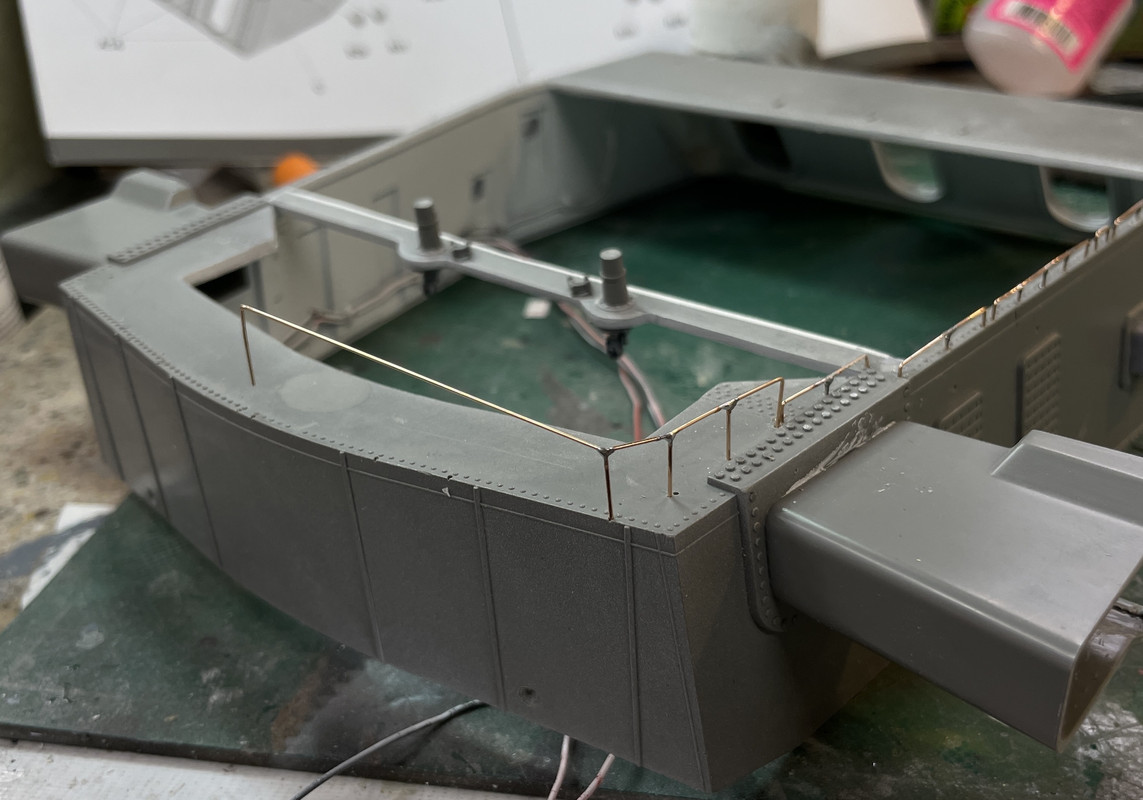
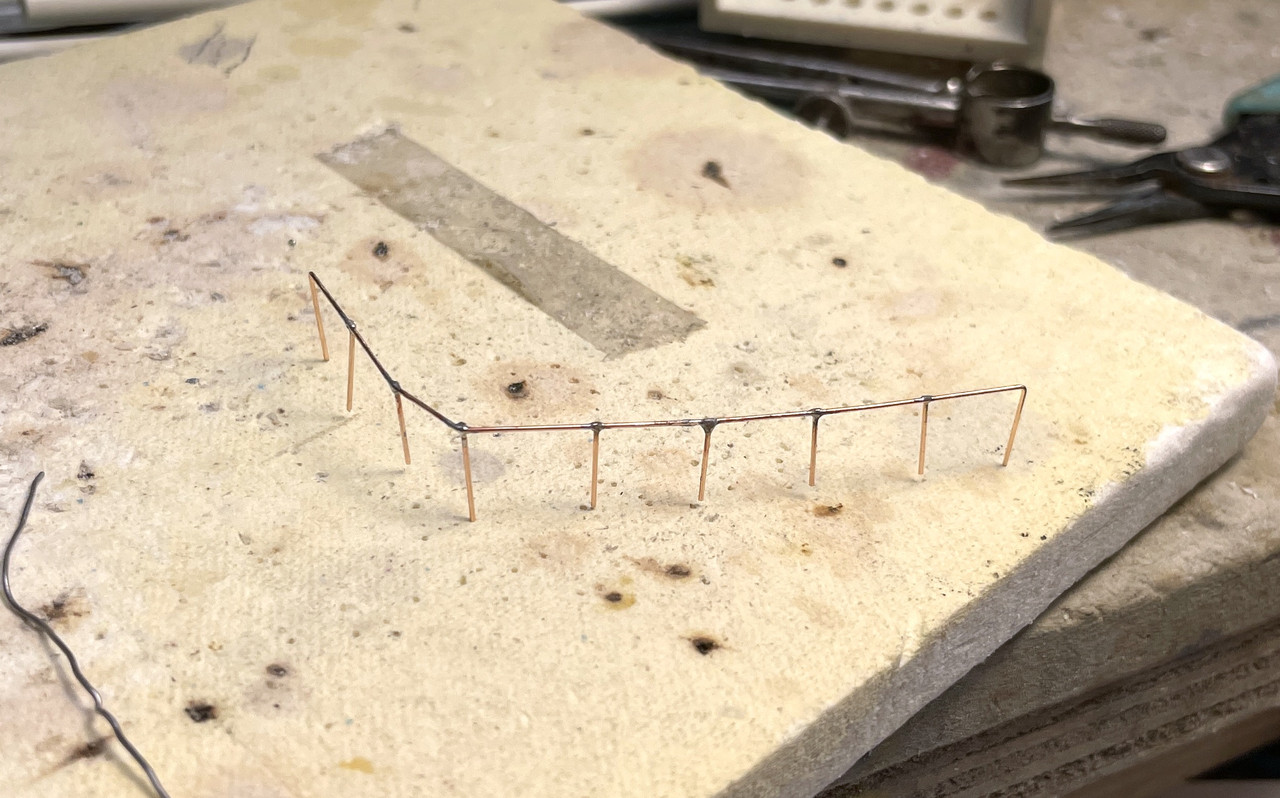 t is so fast and concentrated that I could solder the verticals with the metal supported in the hole in the gun house. Instead of filing the angle on the end, I filed a curved notch in the middle of the wire. The notch nestled tightly against the horizontal and soldering was very clean. Furthermore, it was already aligned with the hole in which it was going to end up.
t is so fast and concentrated that I could solder the verticals with the metal supported in the hole in the gun house. Instead of filing the angle on the end, I filed a curved notch in the middle of the wire. The notch nestled tightly against the horizontal and soldering was very clean. Furthermore, it was already aligned with the hole in which it was going to end up.